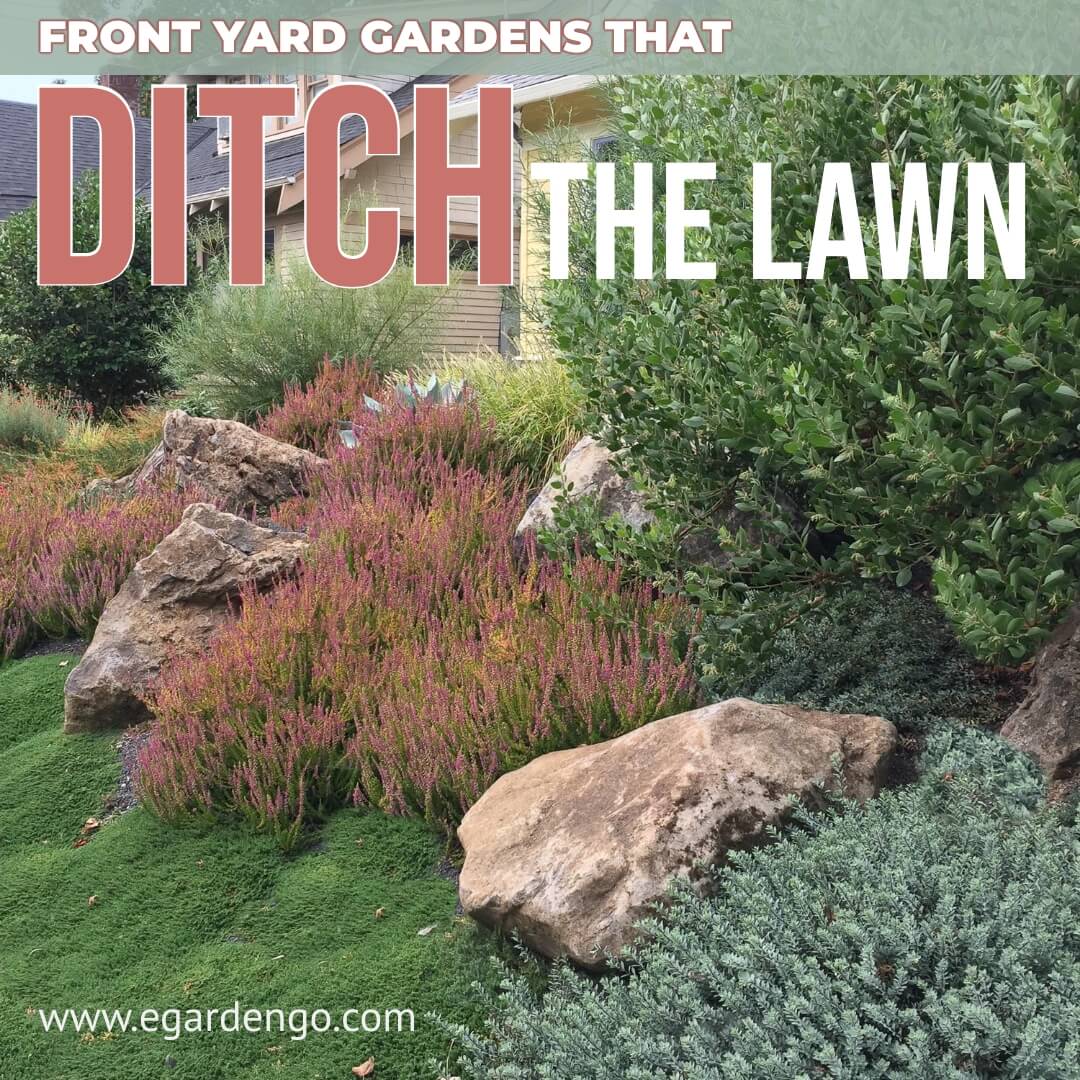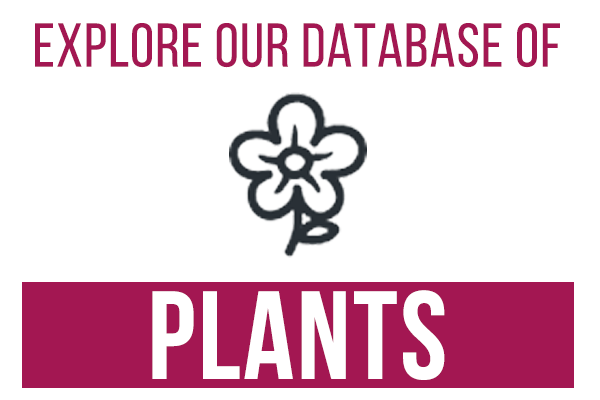A lot of us have been spending a lot more time at home and in our gardens. Our homes have become the go-to destination for staycations and it is widely predicted that this trend will continue into 2022 and beyond. As a result, there's an intense amount of interest in making our outdoor spaces the best they can be.
(Design credit for lead photo: Creative Landscapes, Inc. Portland, Oregon)
Does your next home project include a front garden makeover? If so, you're in good company. Many homeowners are looking for ideas and information on how to landscape their front yard. A popular project is to install an alternative to the traditional grass lawn—relying instead on beautifully planted garden beds, installing a patio seating area, creating a courtyard or other landscaping feature.
In this post, I'll be showing you alternatives to the traditional grassy lawn and how to rely instead on beautifully planted garden beds, a patio seating area, a courtyard, or other landscaping feature. I hope that these ideas will open your eyes to ways you can design a grass-free front yard landscape. (Of course, many of these landscaping ideas for your yard translate to backyard landscapes as well.)
Things to Think About Before You Take the No-Grass Plunge in Your Front Yard
- Function—is there way you'd like to use the property in front of your house?
- Maintenance—how much effort, expense and/or time are you willing to invest?
- Style—do your tastes lean toward tidy and modern, or do your prefer loose and romantic?
Have as much grass as you need—no more, no less.
How much lawn grass do you need? It's different for everyone, but it helps to think it through. For a lot of people, a small patch will do. And more and more people are coming to realize that a no-grass front yard is A-okay.
Many of the homeowners that I advise have a hard time letting go of all the front yard grass, at least at first. So I try to get them to hone in on exactly how much grass they actually need. I also encourage them to consider other ways they might use the space. Do they need a lawn large enough for a rambunctious pet to run? Enough room for a game of croquet or for the kiddos to play tag? Or do they really need just a little spot to relax and wriggle their toes in cool green grass? Oftentimes, this deeply-held desire for a large lush lawn can be satisfied with a very small patch of green.
And sometimes that spot of green doesn't even need to be lawn grass. A different, less resource-greedy plant actually gets them where they want to go. See below to get ideas for plants to use instead of grass.
advertisement
Stylish Alternatives to Front Yard Lawn Grass
Below are some galleries of photos with lots of ideas for front yard gardens that don't include grass.
PLANT BASED FRONT YARD GARDENS
-
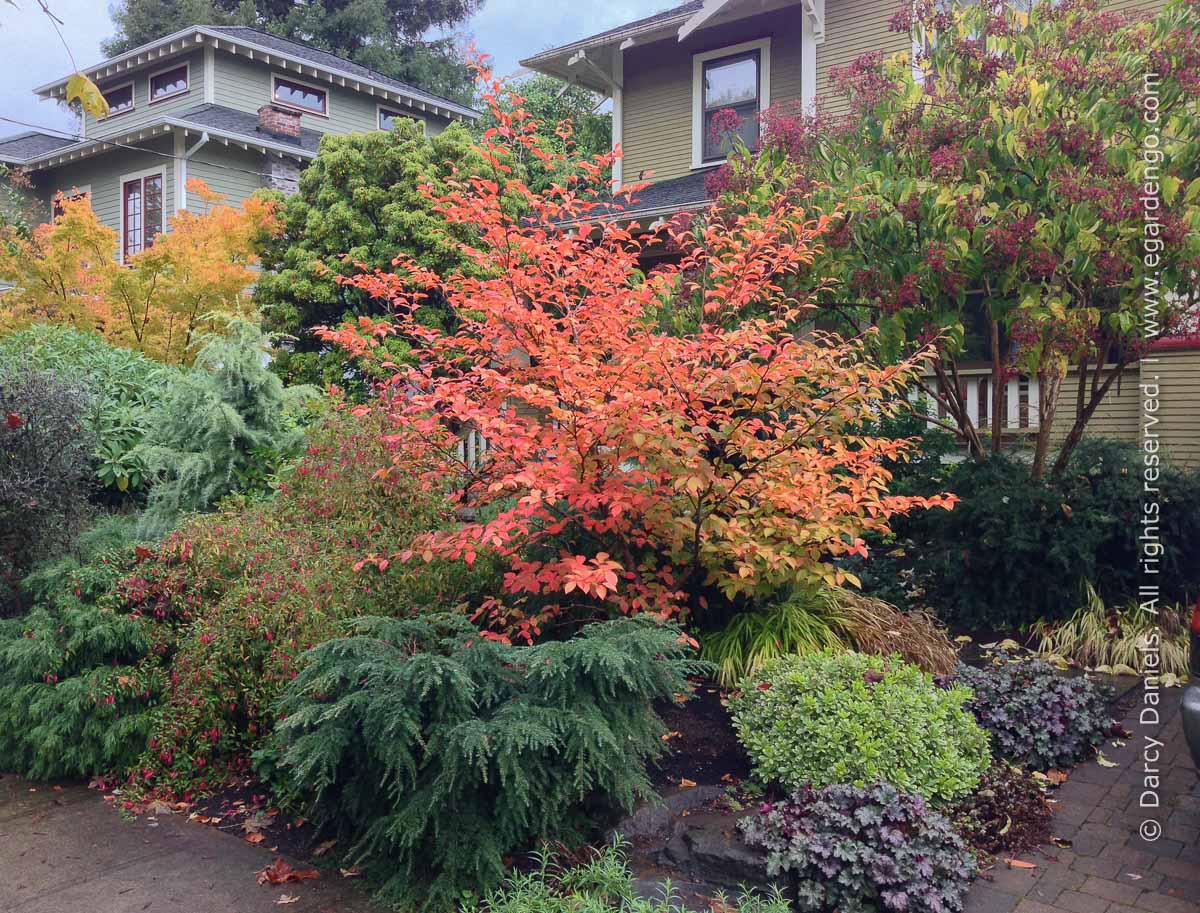
-
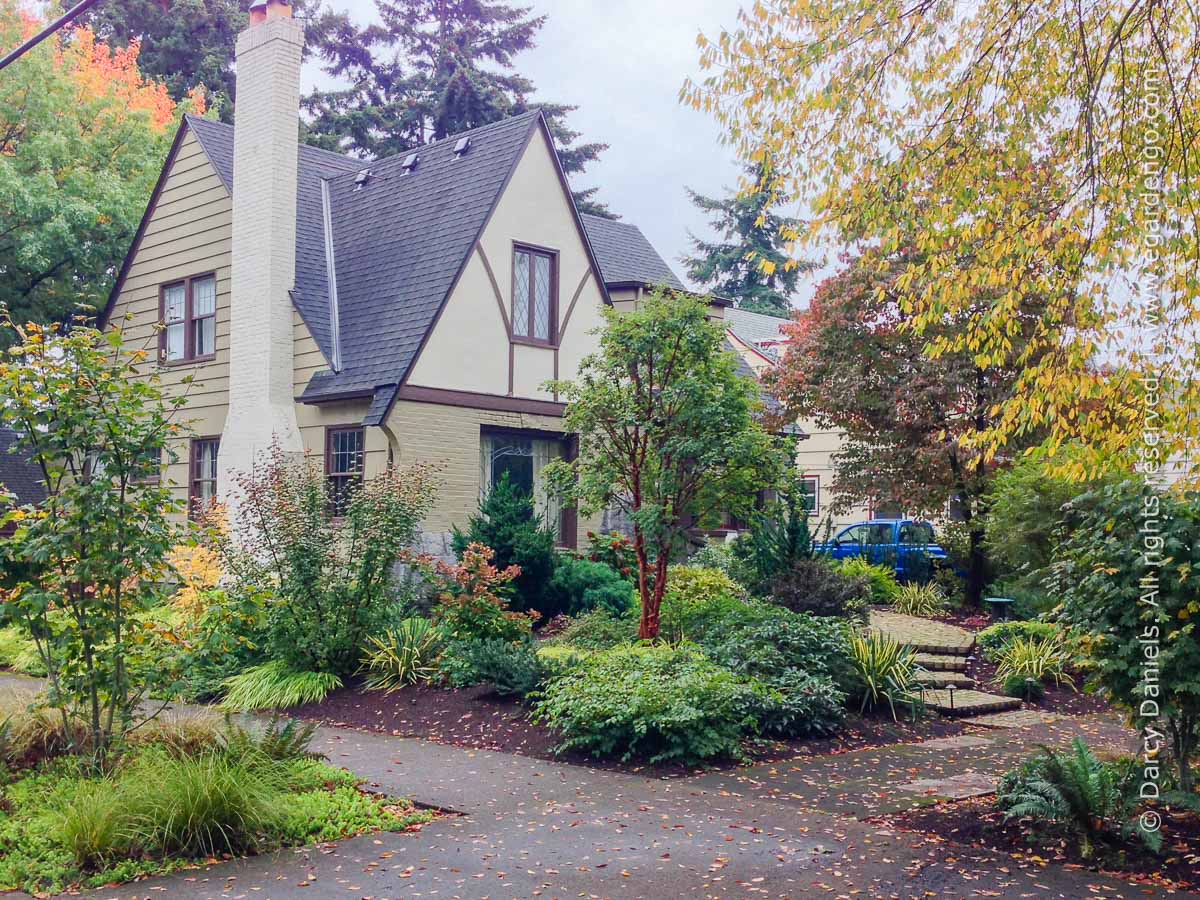
Front yard garden with a traditional Northwest vibe. | Design credit: Bloomtown Gardens, Portland OR
Front yard garden with a traditional Northwest vibe. | Design credit: Bloomtown Gardens, Portland OR
-
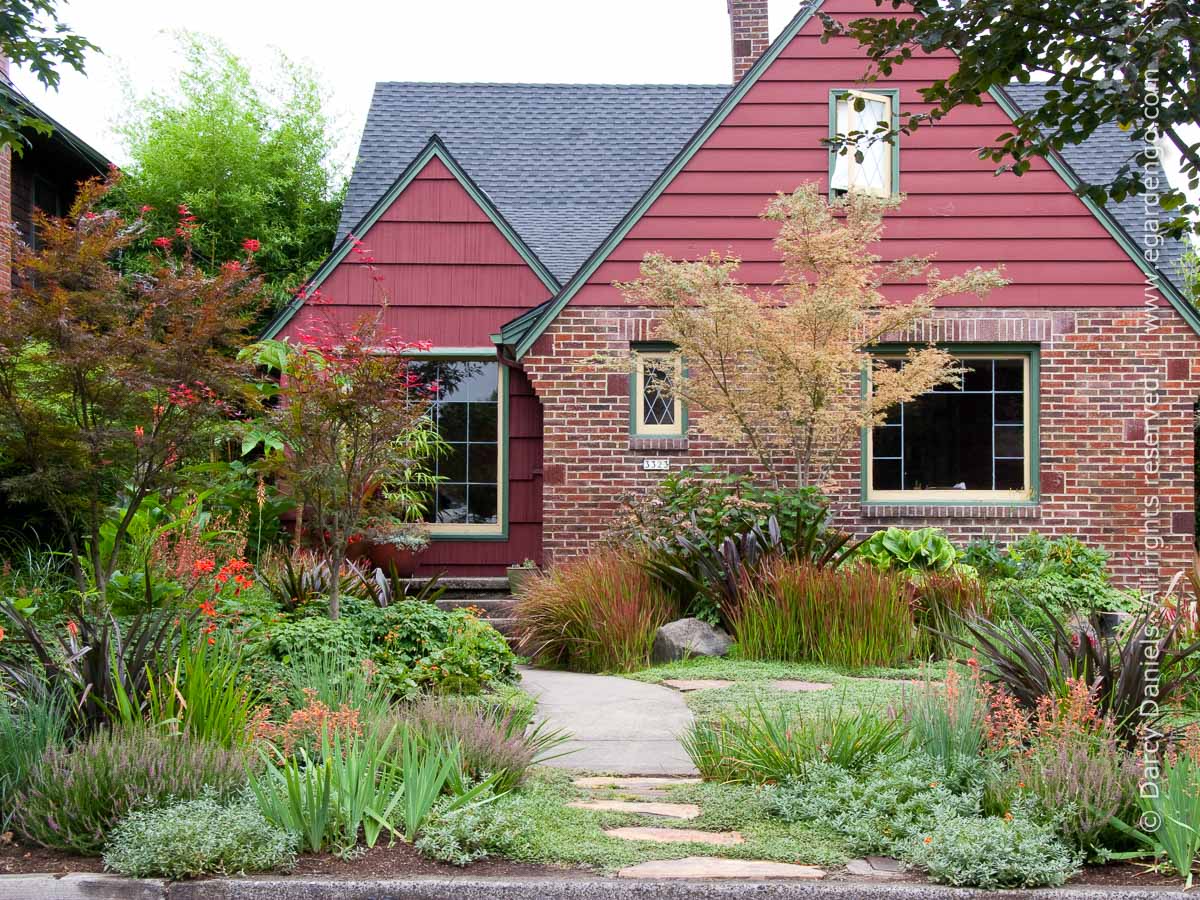
Design credit: Creative Landscapes, Inc. Portland, Oregon
Design credit: Creative Landscapes, Inc. Portland, Oregon
-
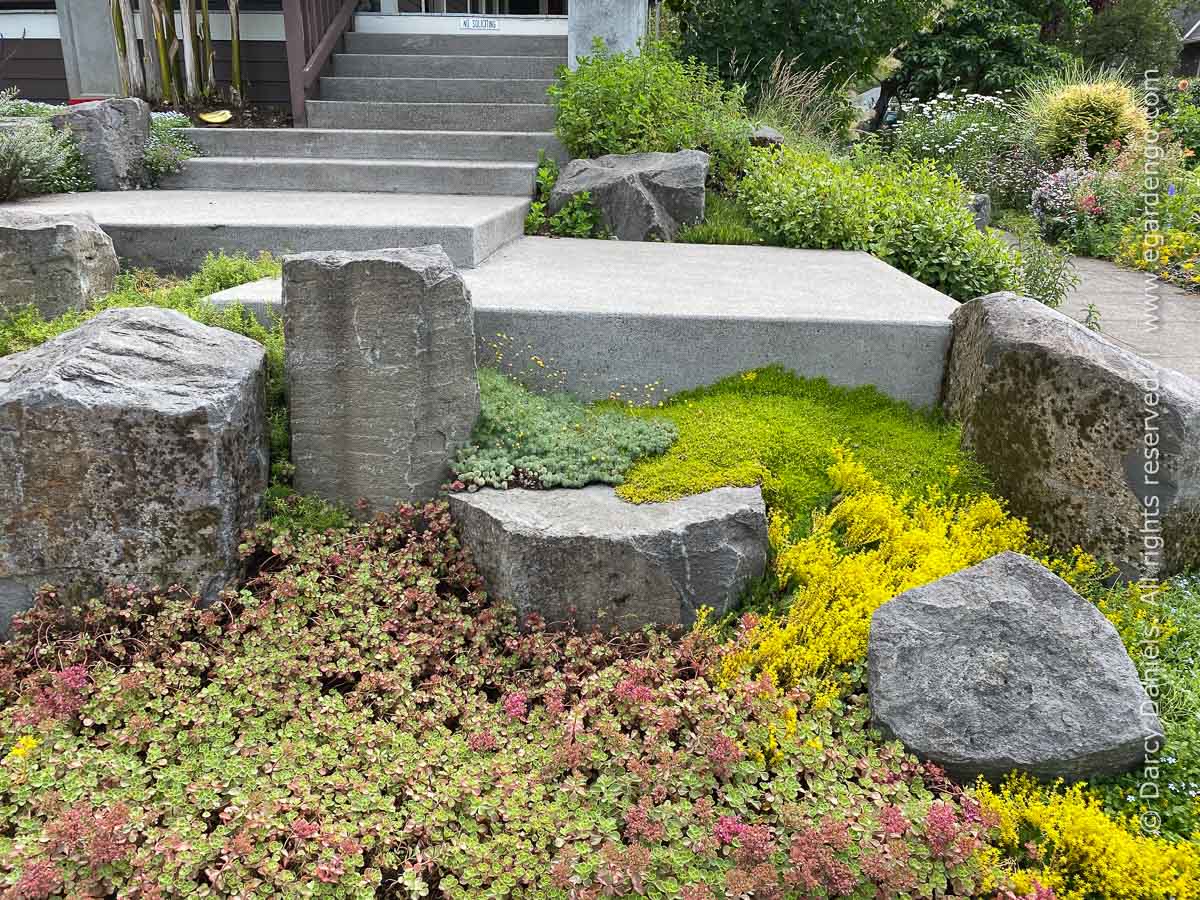
Concrete steps and boulders create a stylish front entry for a sloped garden. Planted with a tapestry of drought-tolerant succulents and ground covers. Design credit: unknown; spotted in a NE Portland OR front yard.
Concrete steps and boulders create a stylish front entry for a sloped garden. Planted with a tapestry of drought-tolerant succulents and ground covers. Design credit: unknown; spotted in a NE Portland OR front yard.
-
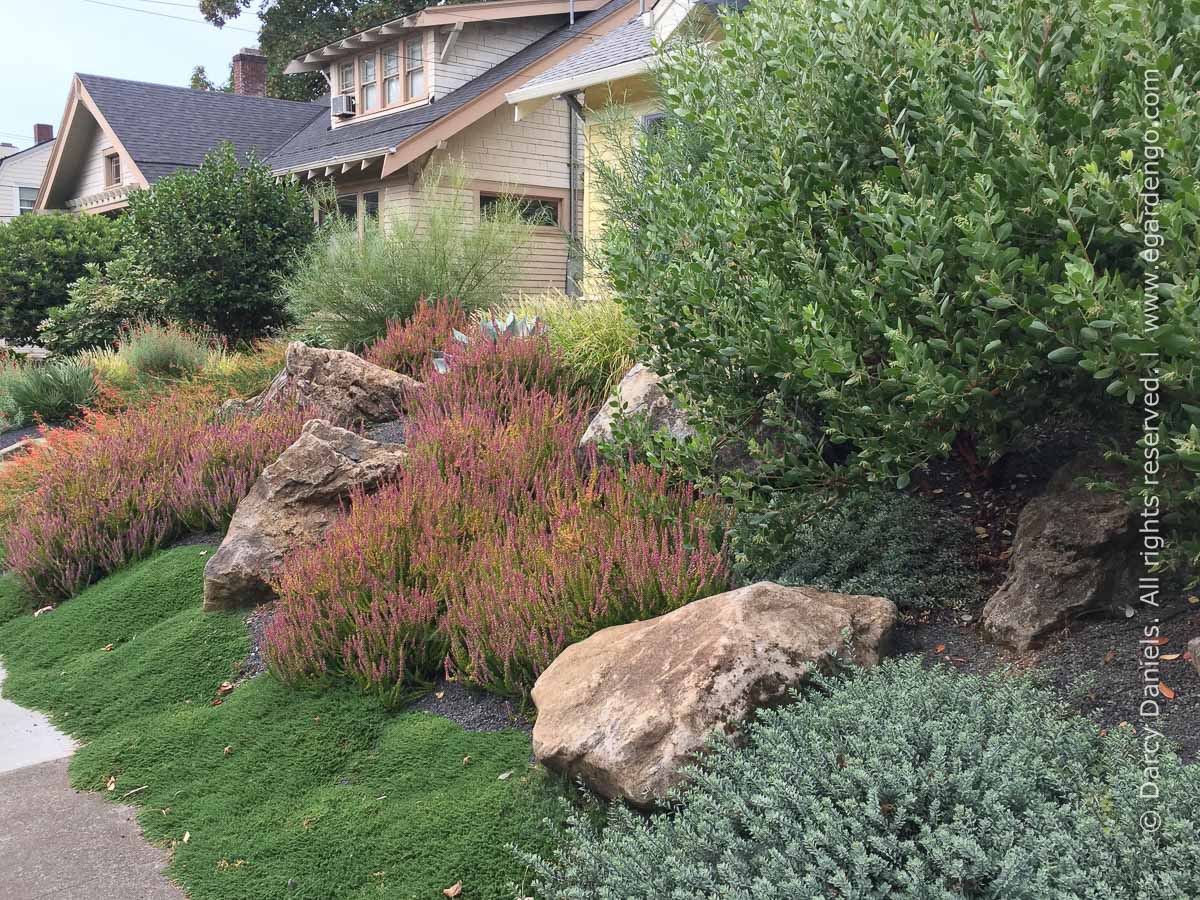
A small palette of drought-tolerant plants are used to create a handsome, low-maintenance front yard garden. Plants include: Hernaria, Calluna (heather), Hebe, and Arctostaphylos. Design credit: Creative Landscapes, Inc. Portland, Oregon.
A small palette of drought-tolerant plants are used to create a handsome, low-maintenance front yard garden. Plants include: Hernaria, Calluna (heather), Hebe, and Arctostaphylos. Design credit: Creative Landscapes, Inc. Portland, Oregon.
-
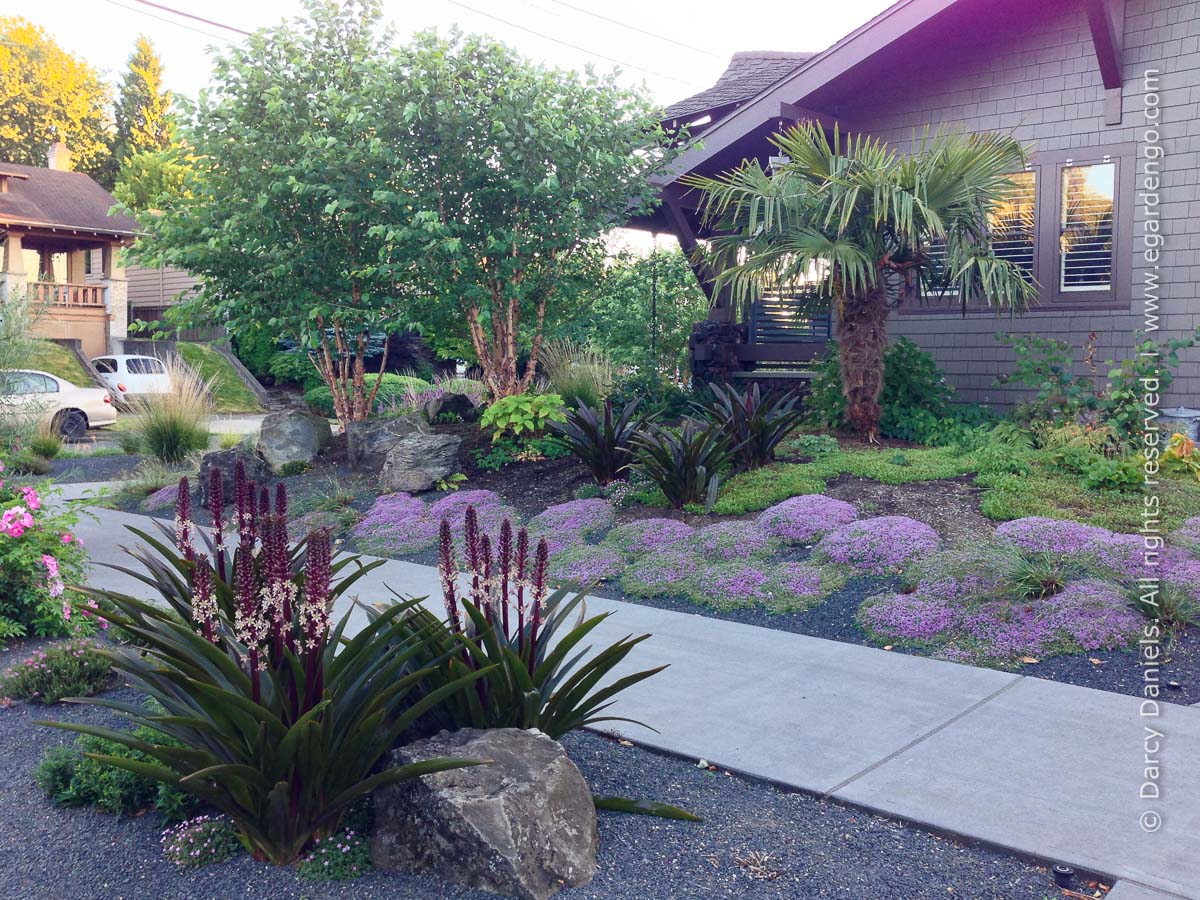
A limited palette of high-drama plants are used in this front yard garden. Plants include: Eucomis, Betula nigra 'Fox Valley', Trachycarpus fortunei, Thymus praecox, and more. Design credit: Creative Landscapes, Inc. Portland, Oregon.
A limited palette of high-drama plants are used in this front yard garden. Plants include: Eucomis, Betula nigra 'Fox Valley', Trachycarpus fortunei, Thymus praecox, and more. Design credit: Creative Landscapes, Inc. Portland, Oregon.
-
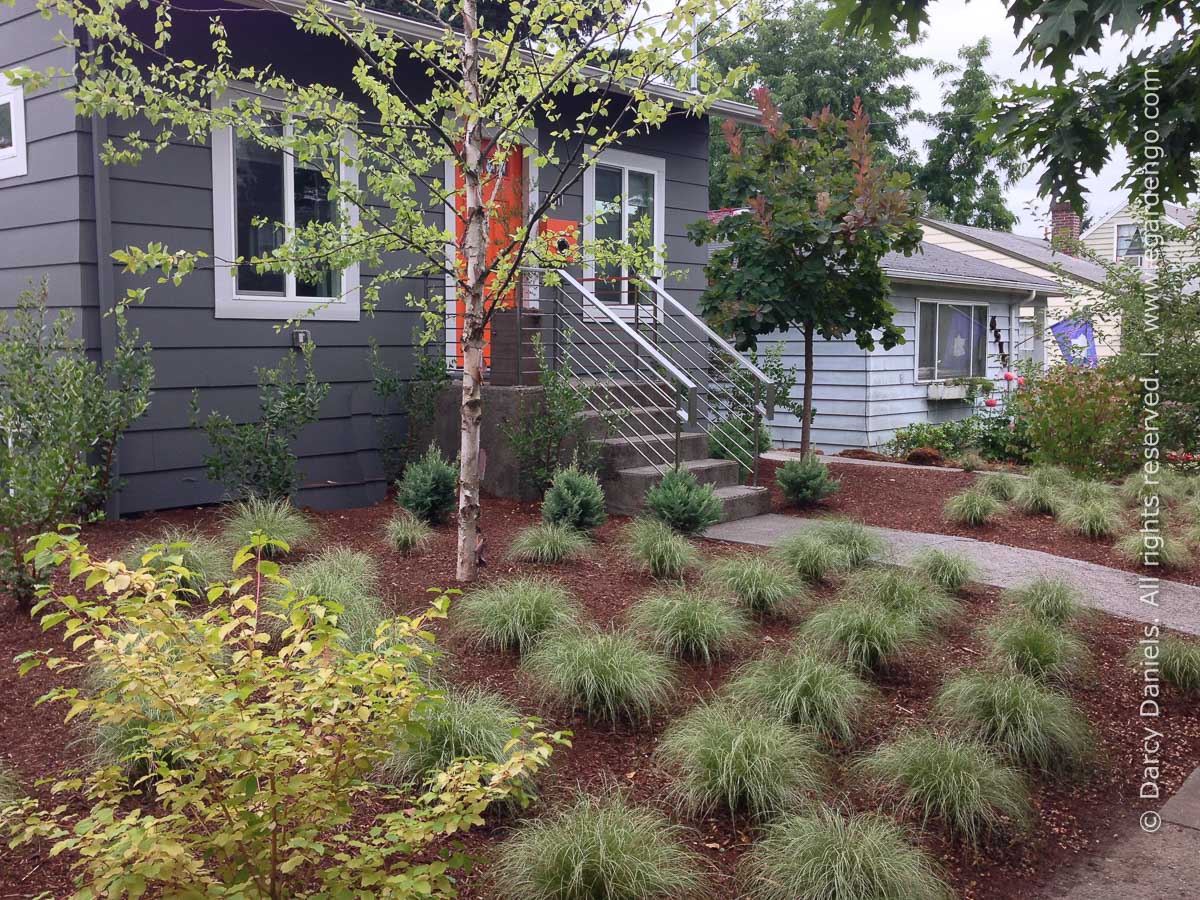
Another planting that relies on a small number of plant selections. The result is a low-maintenance, quasi-modern front yard. Swaths of Carex comans 'Frosted Curls' stand-in for lawn. No mowing required! Design credit: unknown; spotted in a NE Portland OR front yard.
Another planting that relies on a small number of plant selections. The result is a low-maintenance, quasi-modern front yard. Swaths of Carex comans 'Frosted Curls' stand-in for lawn. No mowing required! Design credit: unknown; spotted in a NE Portland OR front yard.
Option 1: Lush and Full For the Plant Lovers
This approach is for hortiholics in the crowd—the type of gardeners whose motto is, "Gimme more plants!" I fall into this category, having long ago ditched my lawn. In place of a front yard lawn, my garden has a seating area made up of a stone patio surrounded by dozens of plants—a lush tapestry that includes a few trees, and a wide variety of shrubs, perennials, and grasses .
Option 2: Use a Few Carefully-Chosen Plants for a Clean and Modern Look
If you're looking for a less rowdy, more predictable garden, you might want to use a smaller palette of plants. Plants can be unpredictable and growing a complex, plant-intensive garden isn't for everyone. But that doesn't mean that it has to be boring. Far from it! Gardens that use just a few carefully-curated plants often result in a visually calming space and typically exude a more modern vibe. A simpler plant palette also helps to keep the maintenance manageable and easier to learn. As a result, limiting the plant palette can be a good strategy for newer gardeners.
Option 3: Strike a Balance
When you opt for using fewer plants, choosing the best and most appropriate for your conditions is paramount. Take your time, do your research because there's an inherent risk to using a small number of plant species and repeating them. When you use the same plant many times in your landscape and it fails to thrive for whatever reason, then that failure is going to be more evident based on sheer number.
It's a trade-off and you need to figure out how you want to balance it.
When you use a broader range of plants, you end up with fewer "eggs" in each basket so any die-offs that occur will be less obvious. But more plants equal more to learn and usually will require more maintenance. Also the lush, "cramscaped" look isn't for everyone and can get a bit "messy" for some people's taste.
EXPAND YOUR LIVING SPACE WITH A FRONT YARD SEATING AREA
How about using your front yard as a social hub? As we find ourselves sticking close to home in the COVID-19 era, having a place to visit and be neighborly is becoming a priority for many. A front yard seating area is a great way to expand your living area. Having a space to safely gather outdoors is a trend that's showing no sign of slowing down.
Creating this space can be as simple as investing in some comfortable furniture for your front lawn. But creating a more permanent seating area is an even better option. The paving material you use will directly impact the expense and effort needed to create your seating area. Some building materials are easy for DIY gardeners. For example, a gravel seating area would be a relatively easy and straight-forward DIY project. Building walls, setting boulders, pouring concrete walks and retaining walls are examples of projects best left to the pros.
Front Yard Seating Areas
-
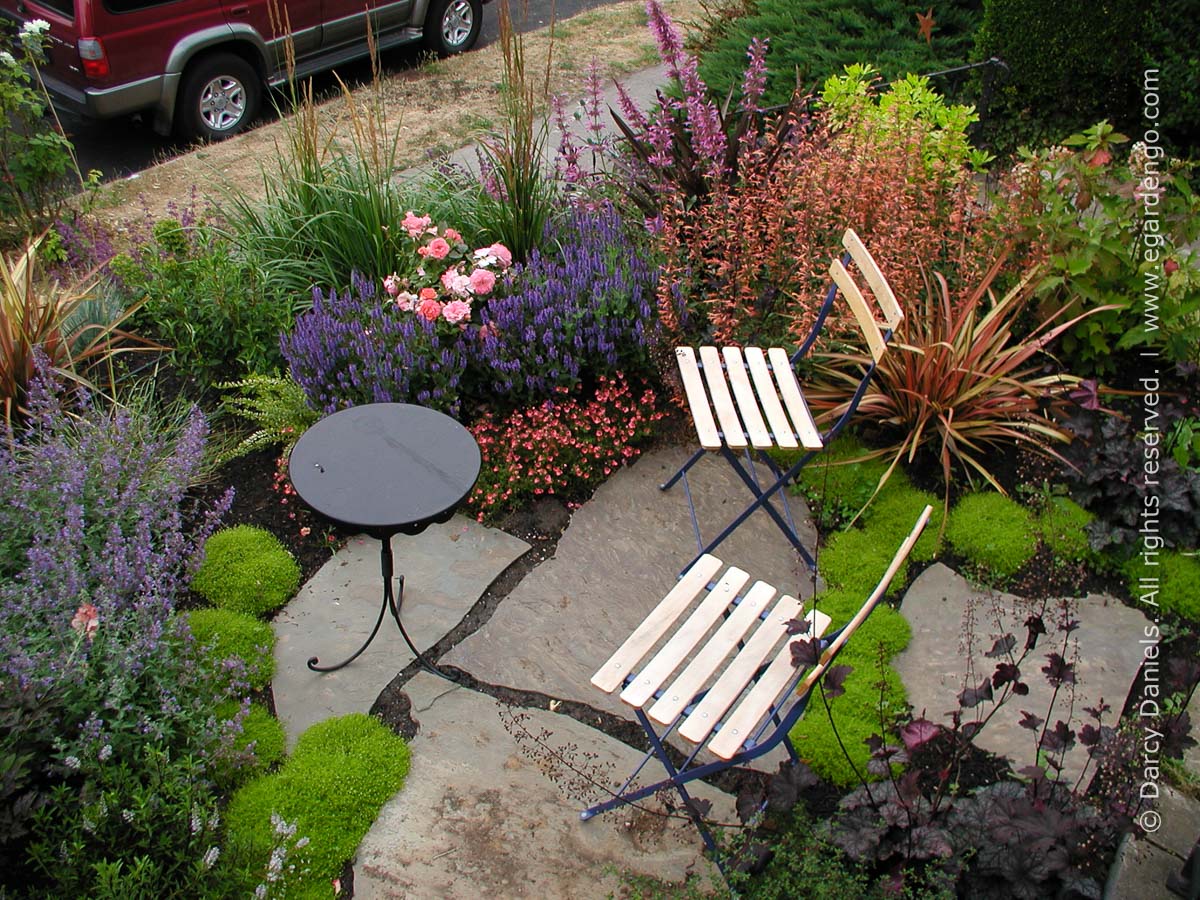
Intimate seating area surrounded by abundant perennials is perched above and overlooks front sidewalk. Design credit: Bloomtown Gardens, Portland OR.
Intimate seating area surrounded by abundant perennials is perched above and overlooks front sidewalk. Design credit: Bloomtown Gardens, Portland OR.
-
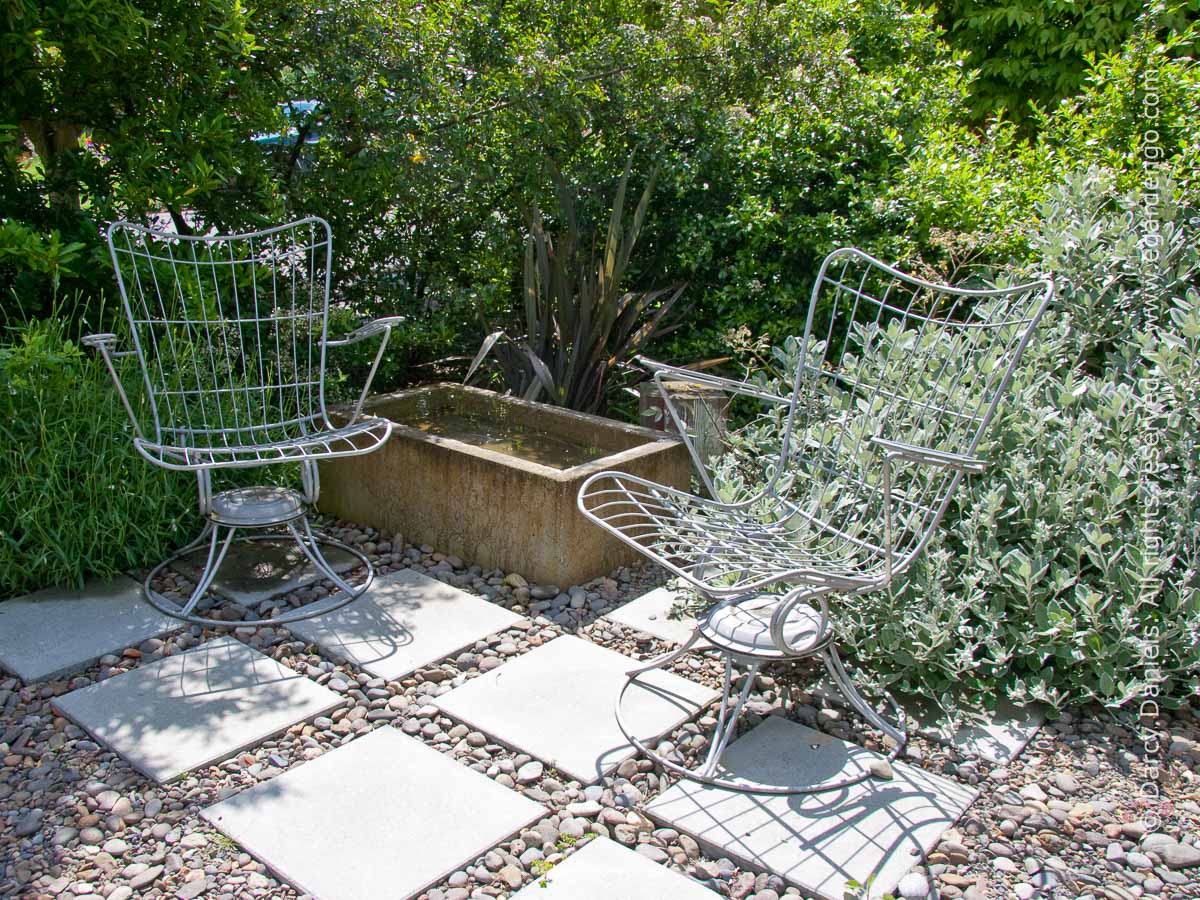
Simple and modern materials are used to create this seating nook surrounded by drought-tolerant plants and a low trough-shaped reflecting pool.
Simple and modern materials are used to create this seating nook surrounded by drought-tolerant plants and a low trough-shaped reflecting pool.
-
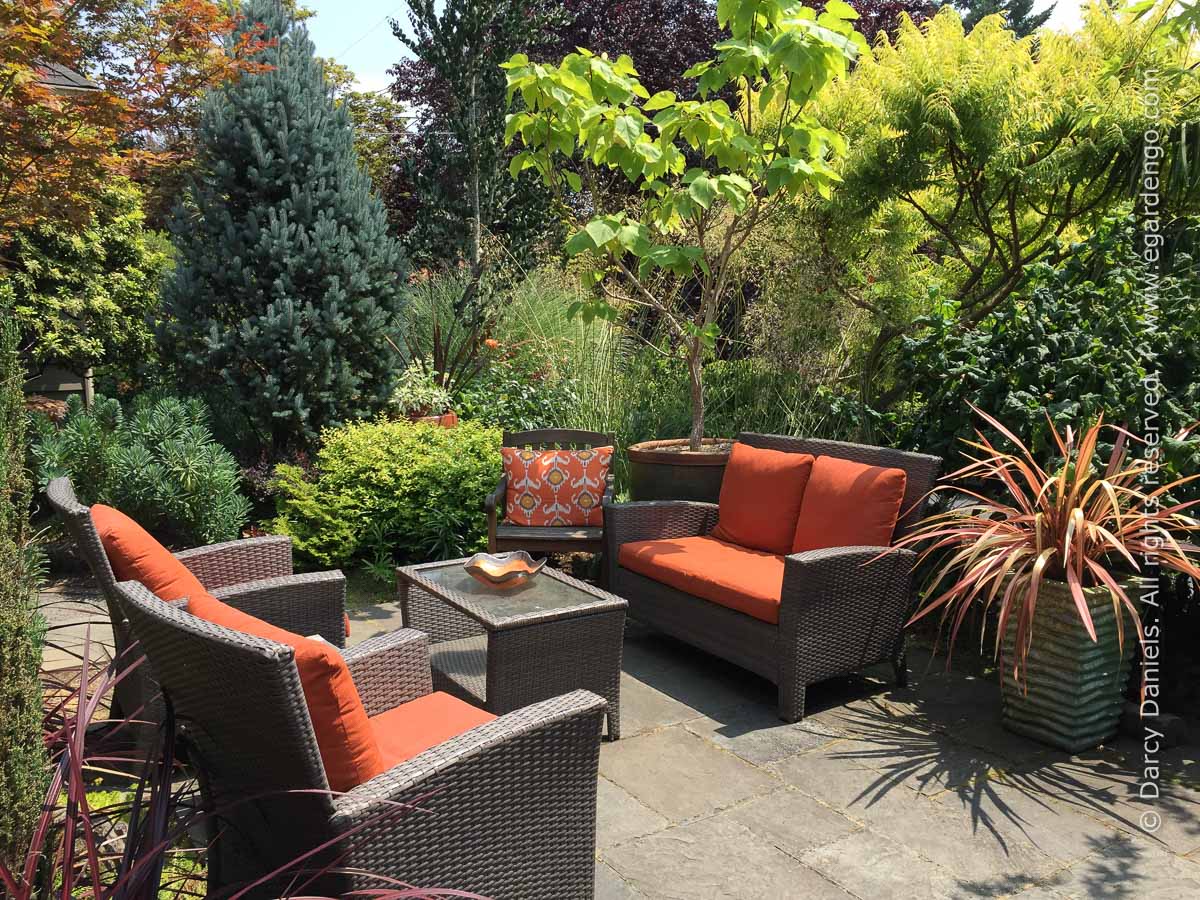
The cushy and inviting seating area on this front yard patio is surrounded by lush and wonderful plantings. A wonderful spot for sociable gatherings. Design credit: Erin Ray Landscapes, Portland OR.
The cushy and inviting seating area on this front yard patio is surrounded by lush and wonderful plantings. A wonderful spot for sociable gatherings. Design credit: Erin Ray Landscapes, Portland OR.
-
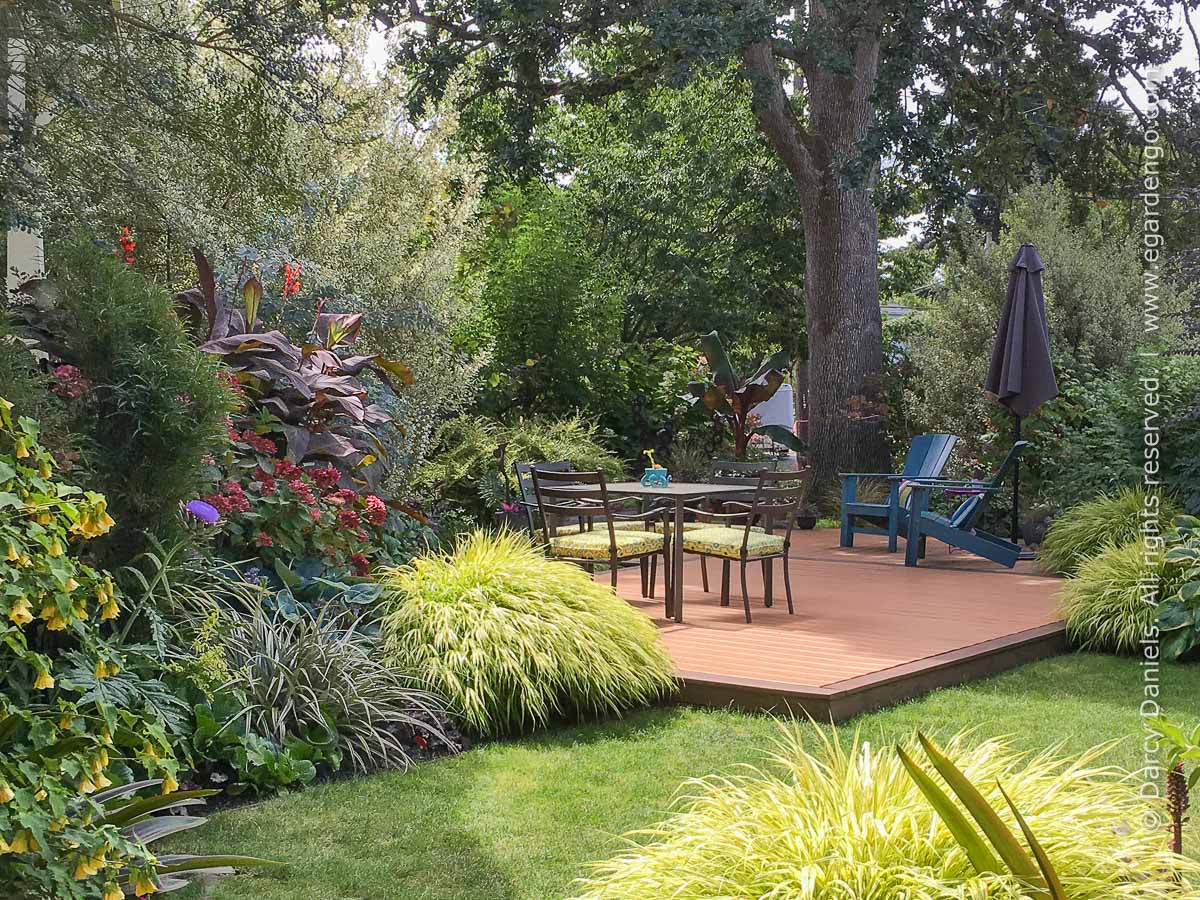
This front yard includes a deck surrounds a large tree. In addition to creating a wonderful place for gathering, it provides a creative solution for building over extensive tree roots. Design credit: Jenn Ferrante.
This front yard includes a deck surrounds a large tree. In addition to creating a wonderful place for gathering, it provides a creative solution for building over extensive tree roots. Design credit: Jenn Ferrante.
-
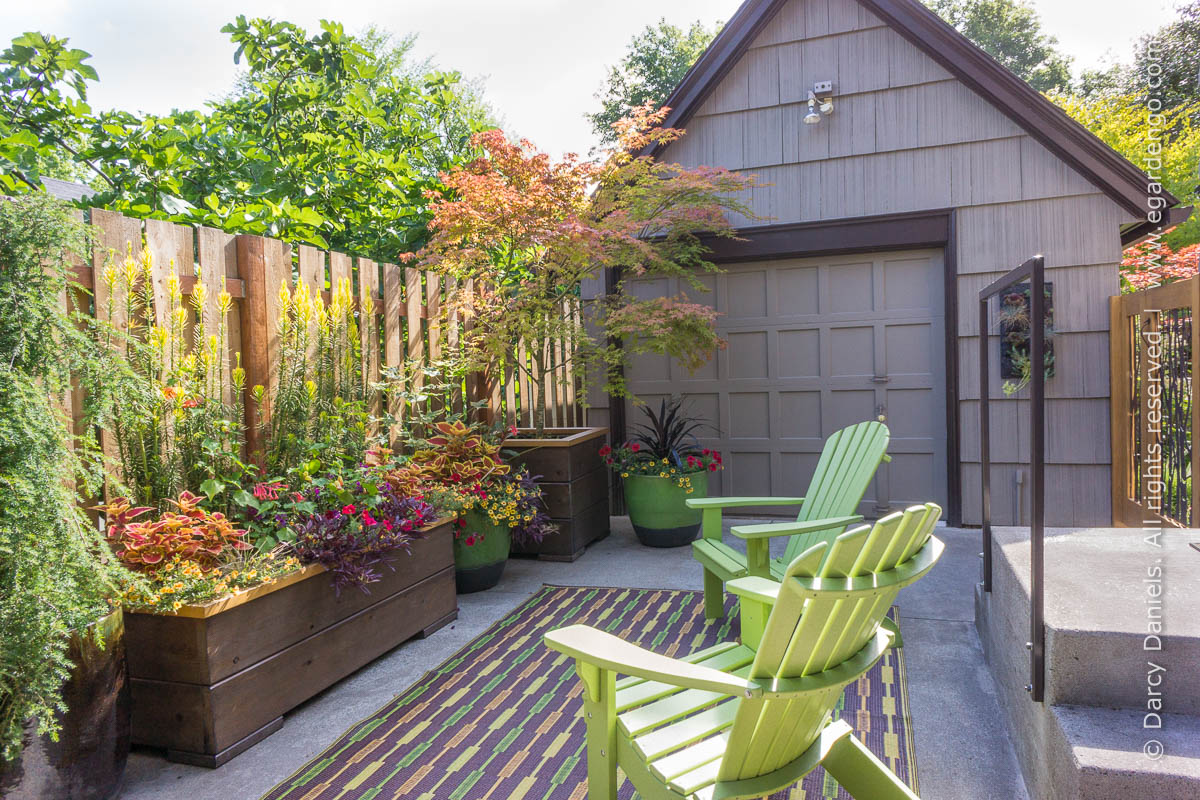
Not a front yard, per se. This container garden is situated at the top of the driveway and brings new life to the area in front of a "garage" that is used for storage vs. vehicles. Design credit: Bloomtown Gardens, Portland OR.
Not a front yard, per se. This container garden is situated at the top of the driveway and brings new life to the area in front of a "garage" that is used for storage vs. vehicles. Design credit: Bloomtown Gardens, Portland OR.
GROW YOUR OWN FOOD
For many homeowners, their front yard is sunnier and better suited to growing edibles than their back yard, which is often shaded by trees and/or neighboring homes. To be successful with a veg garden, you have to grow where you have at least six hours of sun—even if that happens to be in your front yard. A lot of people are hesitant to let it all hang out by growing edibles in front. But creating a garden with structure and a pleasing geometry goes a long way toward keeping it looking tidy—attractive even—year-round.
Frontyard-worthy Vegetable Gardens
-
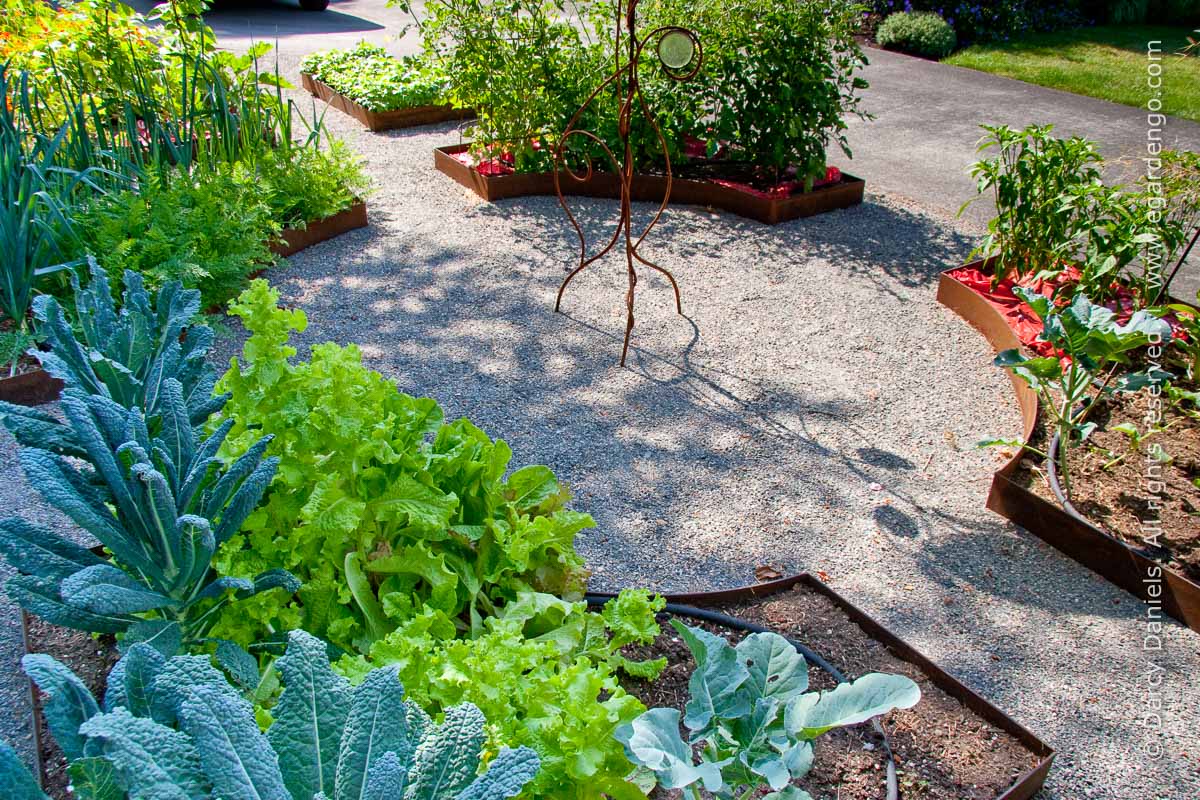
Though clearly at its best in the growing season, the attractive geometry of the bed layout ensures that this front yard vegetable garden looks presentable year-round. Steel edging is used to strike clean lines, setting off the crisp gravel paths. Design credit: Bloomtown Gardens, Portland OR.
Though clearly at its best in the growing season, the attractive geometry of the bed layout ensures that this front yard vegetable garden looks presentable year-round. Steel edging is used to strike clean lines, setting off the crisp gravel paths. Design credit: Bloomtown Gardens, Portland OR.
-
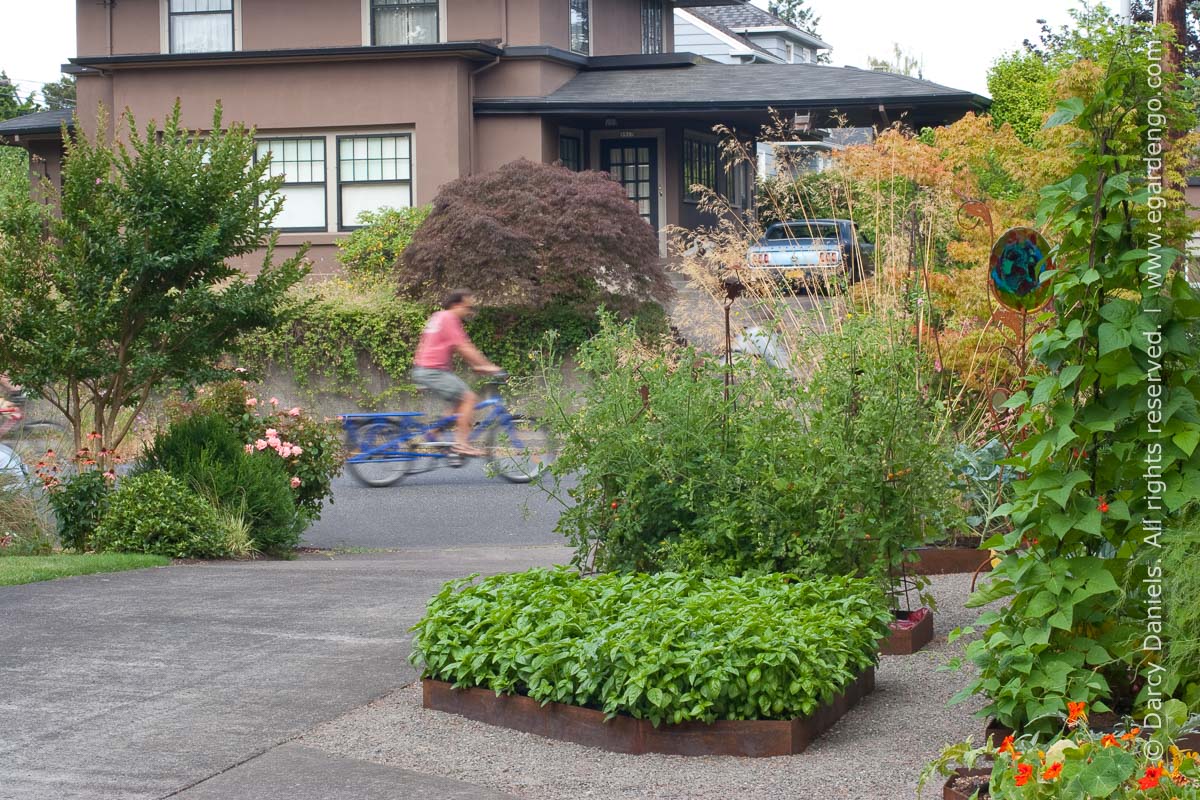
Though clearly at its best in the growing season, the attractive geometry of the bed layout ensures that this front yard vegetable garden looks presentable year-round. Steel edging is used to strike clean lines, setting off the crisp gravel paths. Design credit: Bloomtown Gardens, Portland OR.
Though clearly at its best in the growing season, the attractive geometry of the bed layout ensures that this front yard vegetable garden looks presentable year-round. Steel edging is used to strike clean lines, setting off the crisp gravel paths. Design credit: Bloomtown Gardens, Portland OR.
-
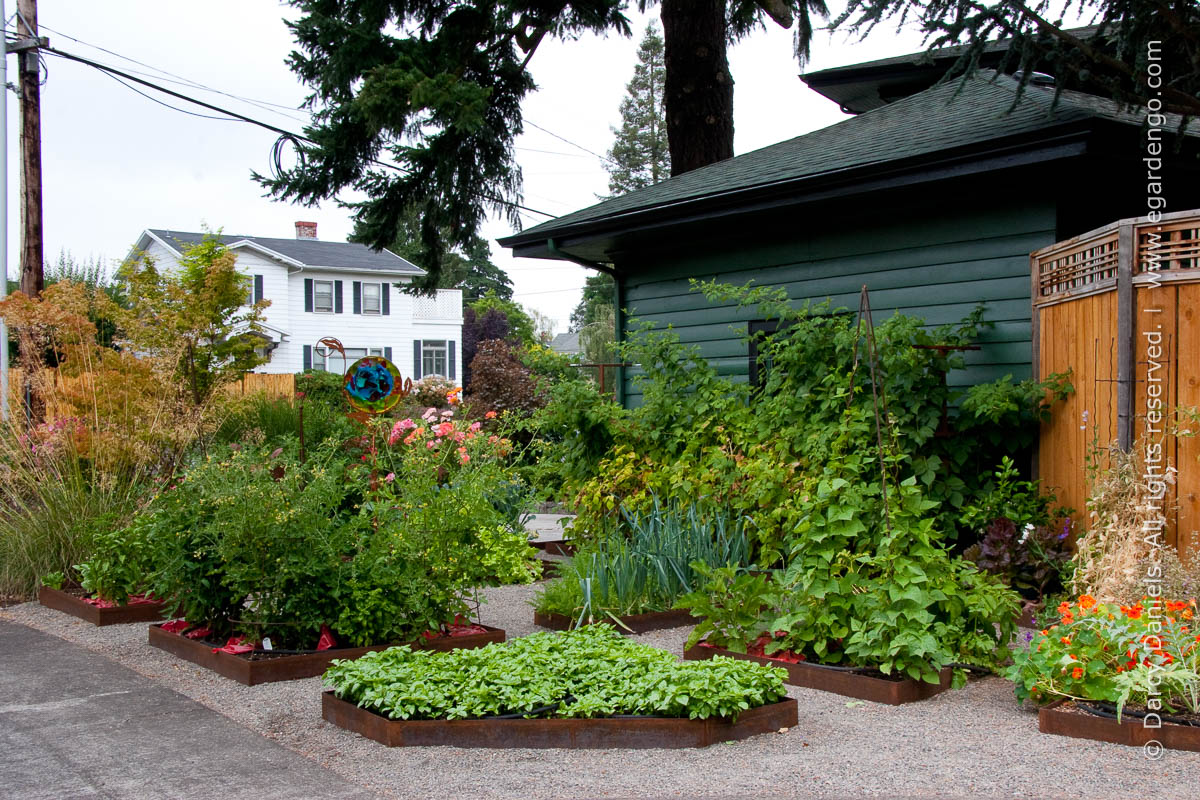
Though clearly at its best in the growing season, the attractive geometry of the bed layout ensures that this front yard vegetable garden looks presentable year-round. Steel edging is used to strike clean lines, setting off the crisp gravel paths. Design credit: Bloomtown Gardens, Portland OR.
Though clearly at its best in the growing season, the attractive geometry of the bed layout ensures that this front yard vegetable garden looks presentable year-round. Steel edging is used to strike clean lines, setting off the crisp gravel paths. Design credit: Bloomtown Gardens, Portland OR.
-
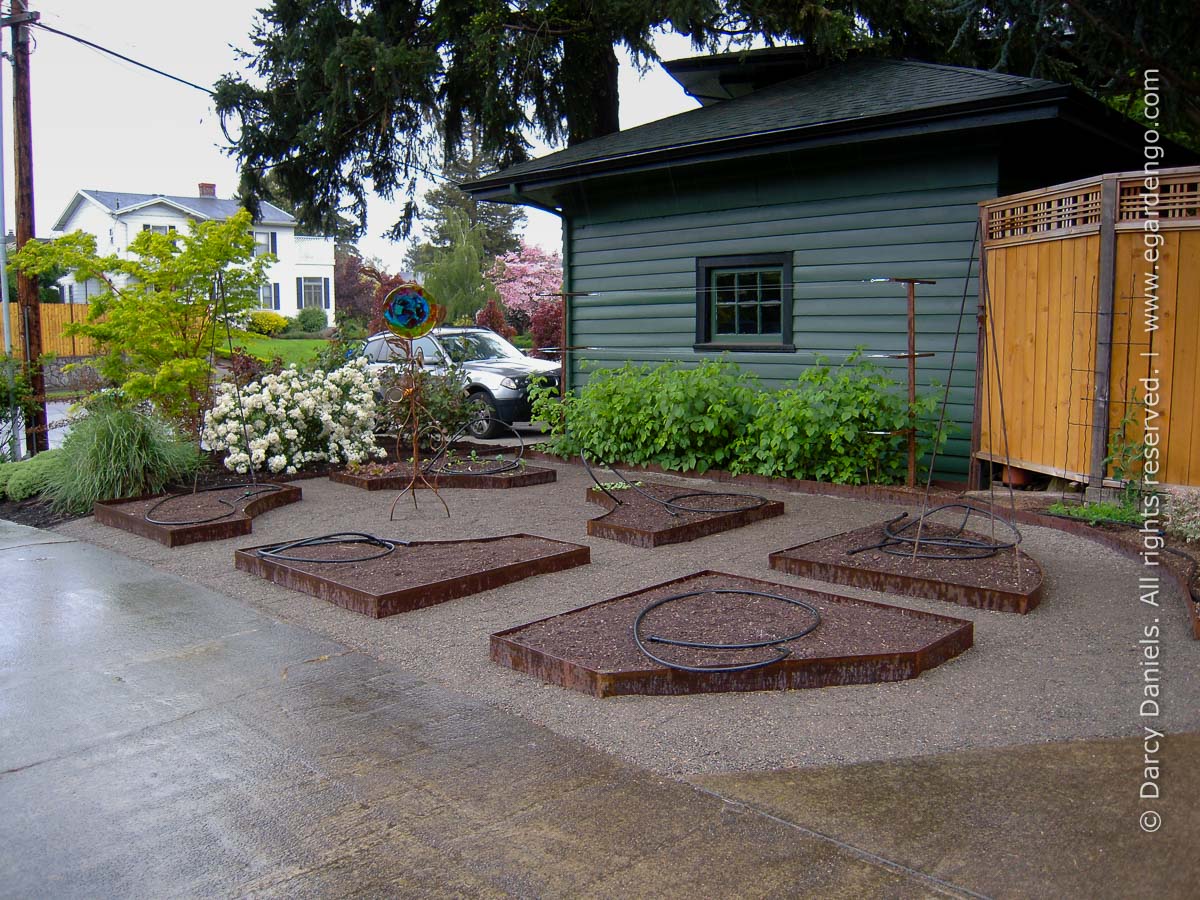
Though clearly at its best in the growing season, the attractive geometry of the bed layout ensures that this front yard vegetable garden looks presentable year-round. Steel edging is used to strike clean lines, setting off the crisp gravel paths. Design credit: Bloomtown Gardens, Portland OR.
Though clearly at its best in the growing season, the attractive geometry of the bed layout ensures that this front yard vegetable garden looks presentable year-round. Steel edging is used to strike clean lines, setting off the crisp gravel paths. Design credit: Bloomtown Gardens, Portland OR.
-
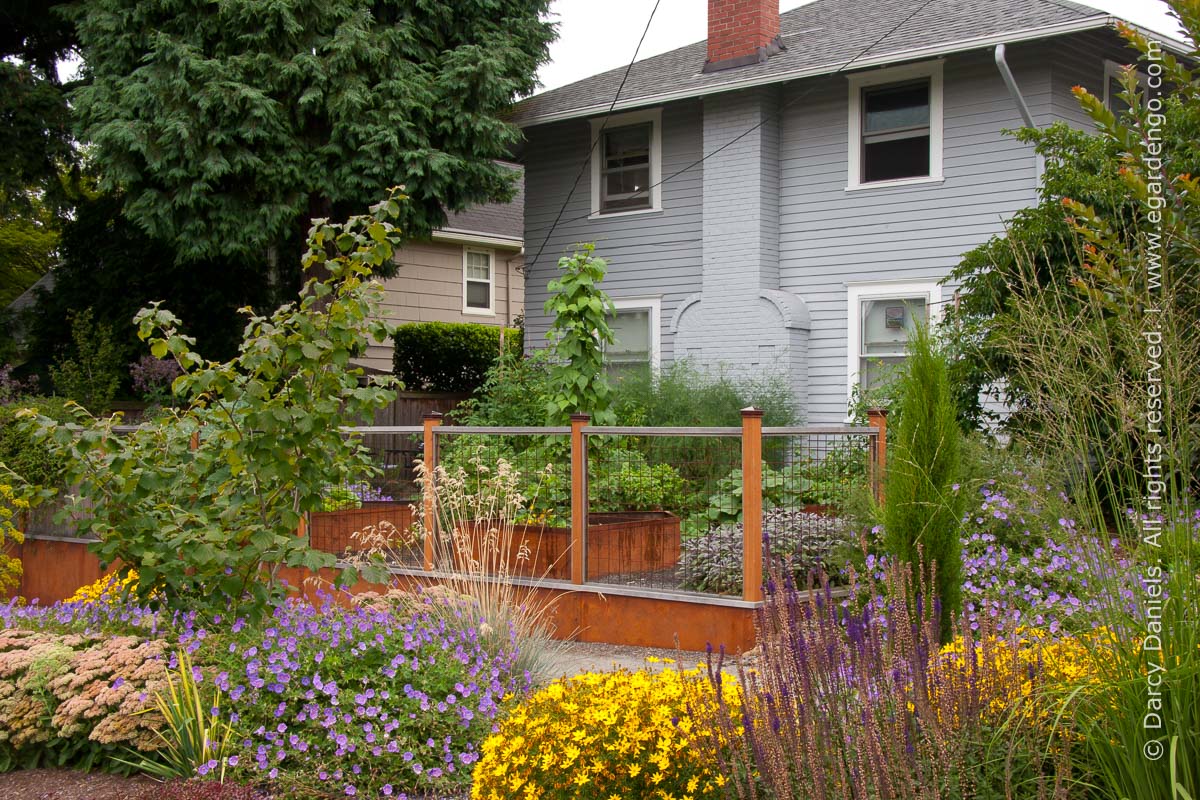
This veg garden also relies on strong lines struck in steel to create structure that looks good all year round. The result is a beautiful place to grow bountiful edibles. Design credit: Bloomtown Gardens, Portland OR.
This veg garden also relies on strong lines struck in steel to create structure that looks good all year round. The result is a beautiful place to grow bountiful edibles. Design credit: Bloomtown Gardens, Portland OR.
-
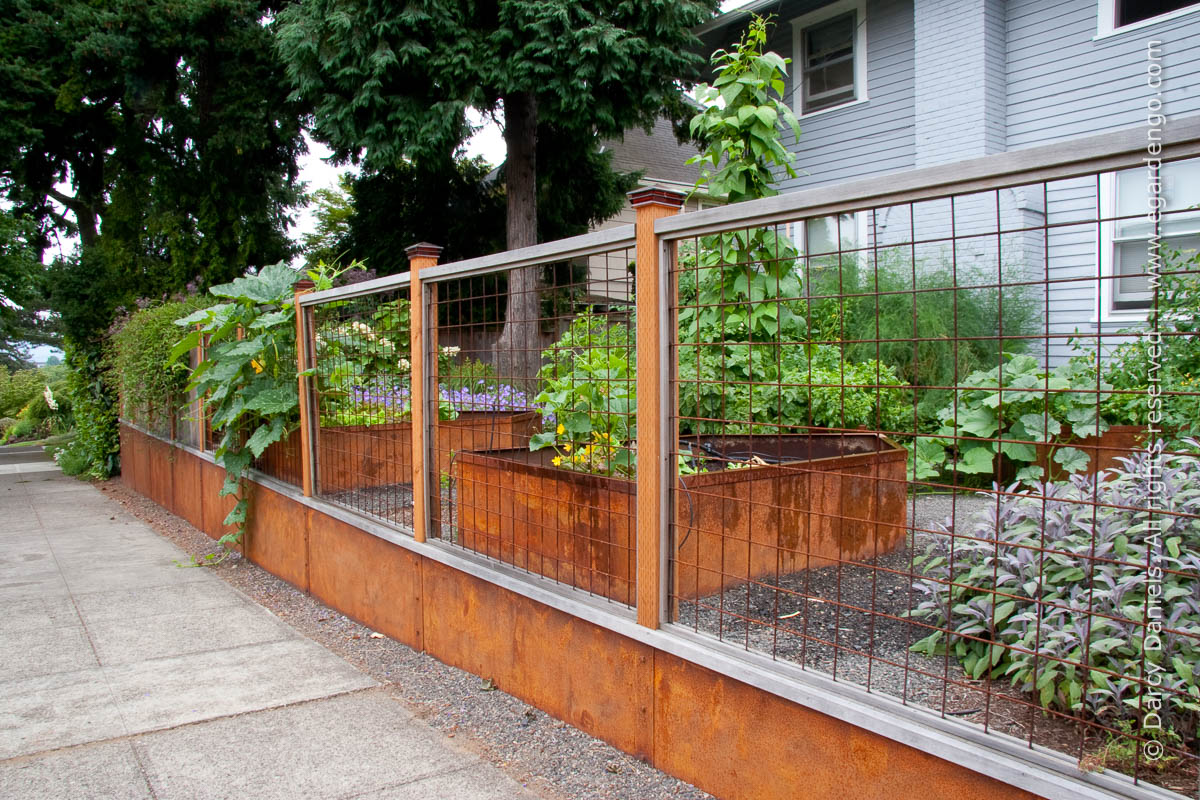
This veg garden also relies on strong lines struck in steel to create structure that looks good all year round. The result is a beautiful place to grow bountiful edibles. Design credit: Bloomtown Gardens, Portland OR.
This veg garden also relies on strong lines struck in steel to create structure that looks good all year round. The result is a beautiful place to grow bountiful edibles. Design credit: Bloomtown Gardens, Portland OR.
-
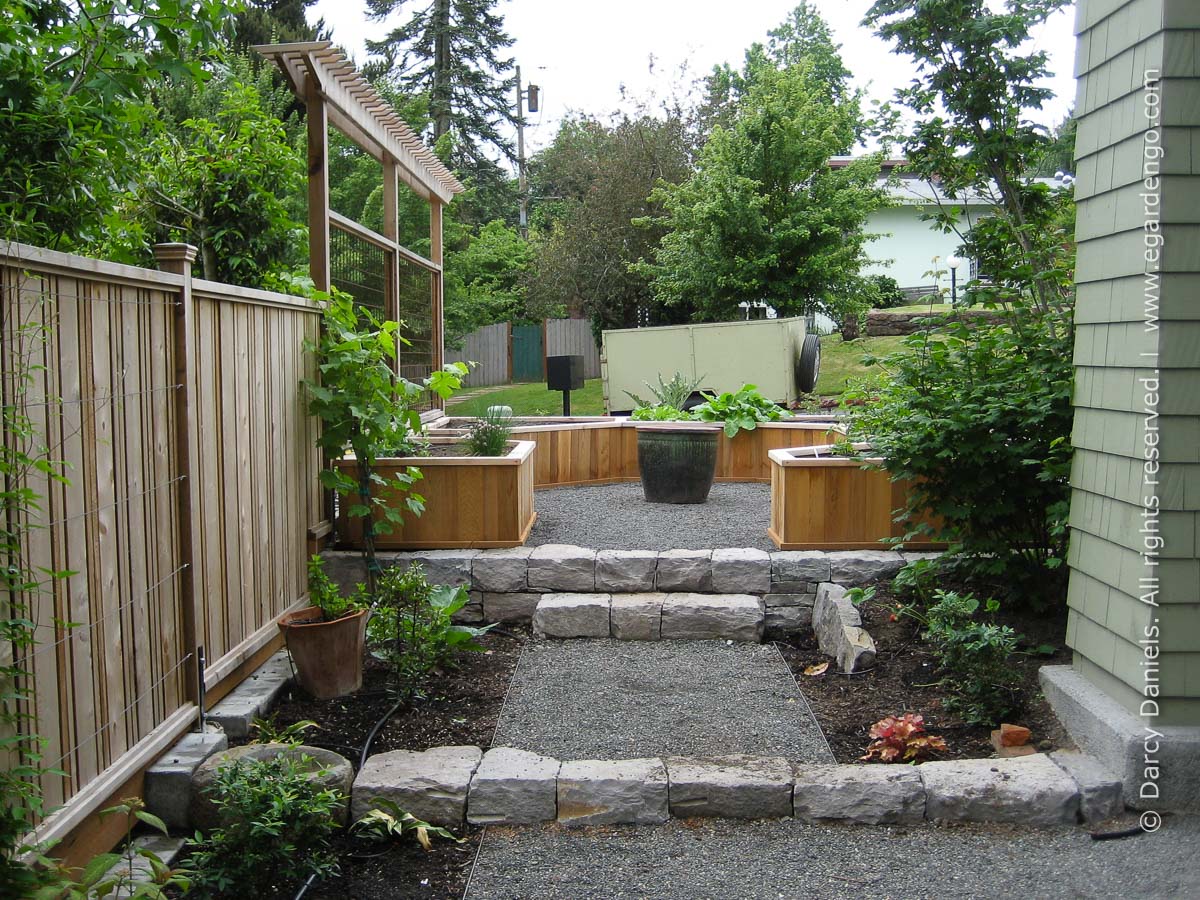
Raised beds in a horseshoe shape are an economical use of space. Coupled with a trellis for growing upward, these built elements provide a structural frame that anchors the scene even when the veg garden is dormant.
Raised beds in a horseshoe shape are an economical use of space. Coupled with a trellis for growing upward, these built elements provide a structural frame that anchors the scene even when the veg garden is dormant.
-
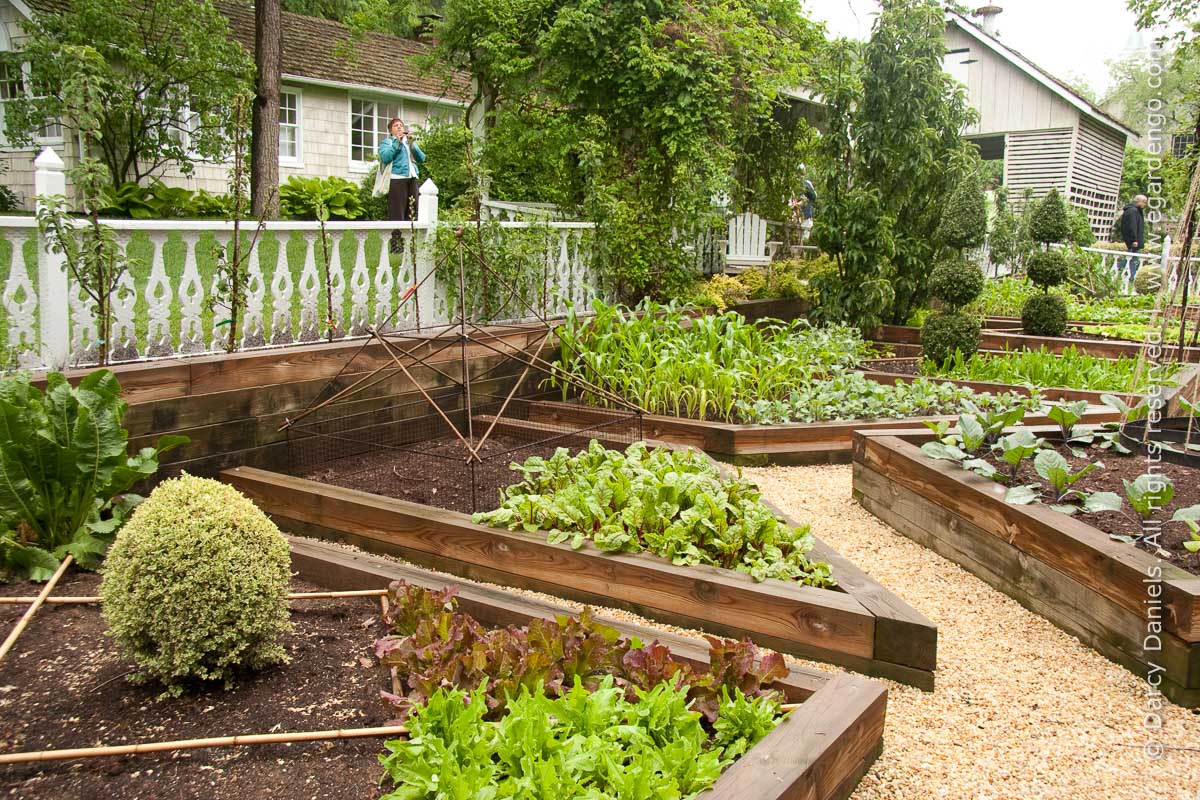
These raised beds are made from stacked timbers and surrounded by paths of decomposed granite.
These raised beds are made from stacked timbers and surrounded by paths of decomposed granite.
USE OTHER PLANTS TO CREATE A NO-MOW LAWN
Grass takes a lot of resources to grow well. You need lots of sun, regular mowing and fertilizers, and consistent water to grow an attractive lawn. Typically what we're trying to create with a lawn is an open area, a place for the eye to rest. This is a common desire and a different need than creating a large, open play space. If your lawn-like area doesn't need to withstand foot traffic, choosing something other than turf grass is a great option and usually won't require as many inputs. The plants below can be used to create a no-mow lawn alternative—instead covering the ground with a mass of plants.
Create a No-mow Lawn with Plants
-
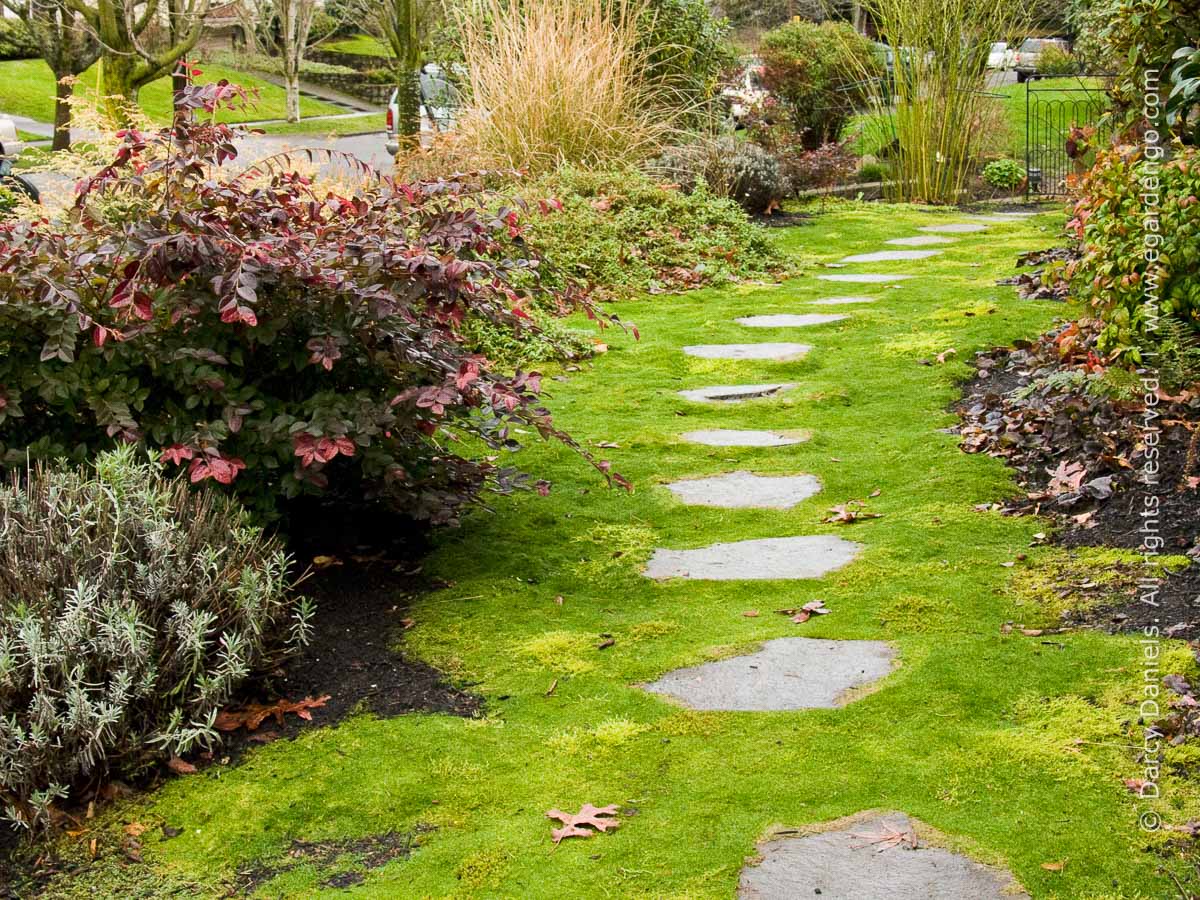
Scotch moss (Sagina subulata 'Aurea') is often confused with moss. It's a vigorous grower that is much more sun-loving than moss.
Scotch moss (Sagina subulata 'Aurea') is often confused with moss. It's a vigorous grower that is much more sun-loving than moss.
-
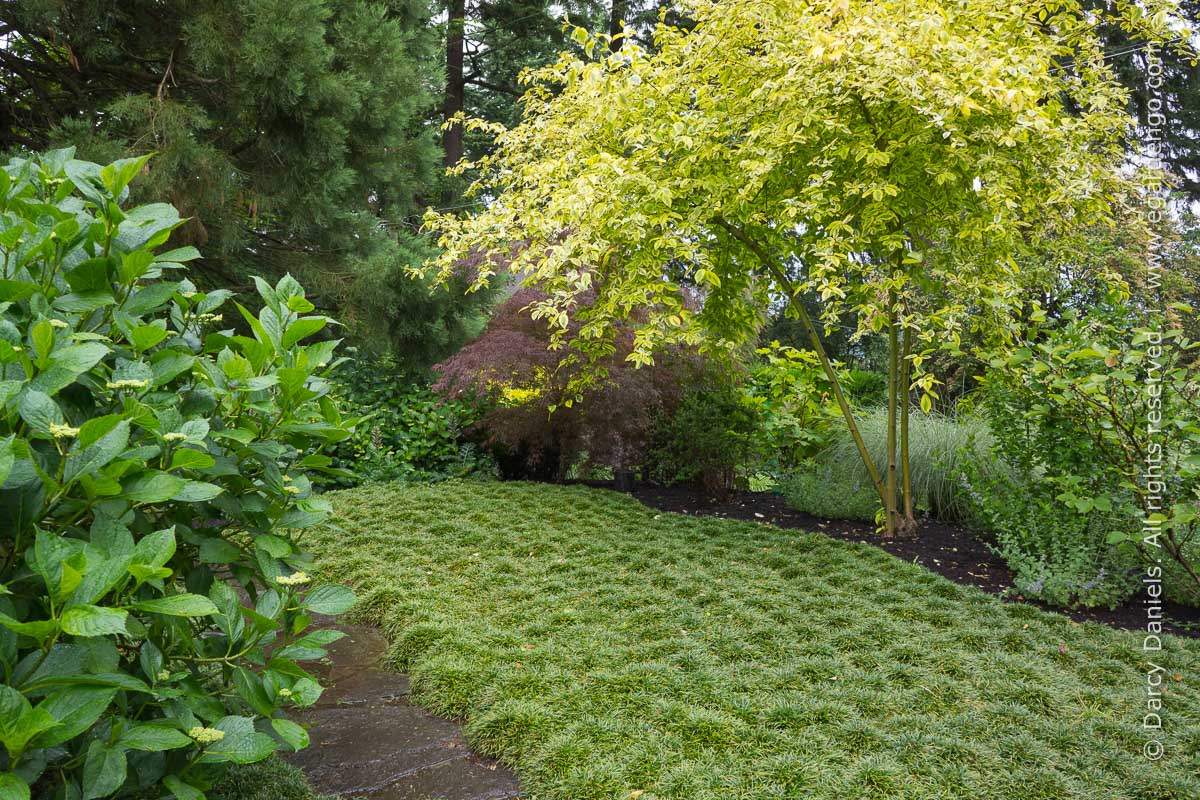
Dwarf mondo grass (Ophiopogon japonicus 'Nanus' ), planted en masse, creates a rich green, lawn-like area. Though unlike like turf grass, it's not tolerant of regular foot traffic. Design credit: Bloomtown Gardens, Portland OR.
Dwarf mondo grass (Ophiopogon japonicus 'Nanus' ), planted en masse, creates a rich green, lawn-like area. Though unlike like turf grass, it's not tolerant of regular foot traffic. Design credit: Bloomtown Gardens, Portland OR.
-
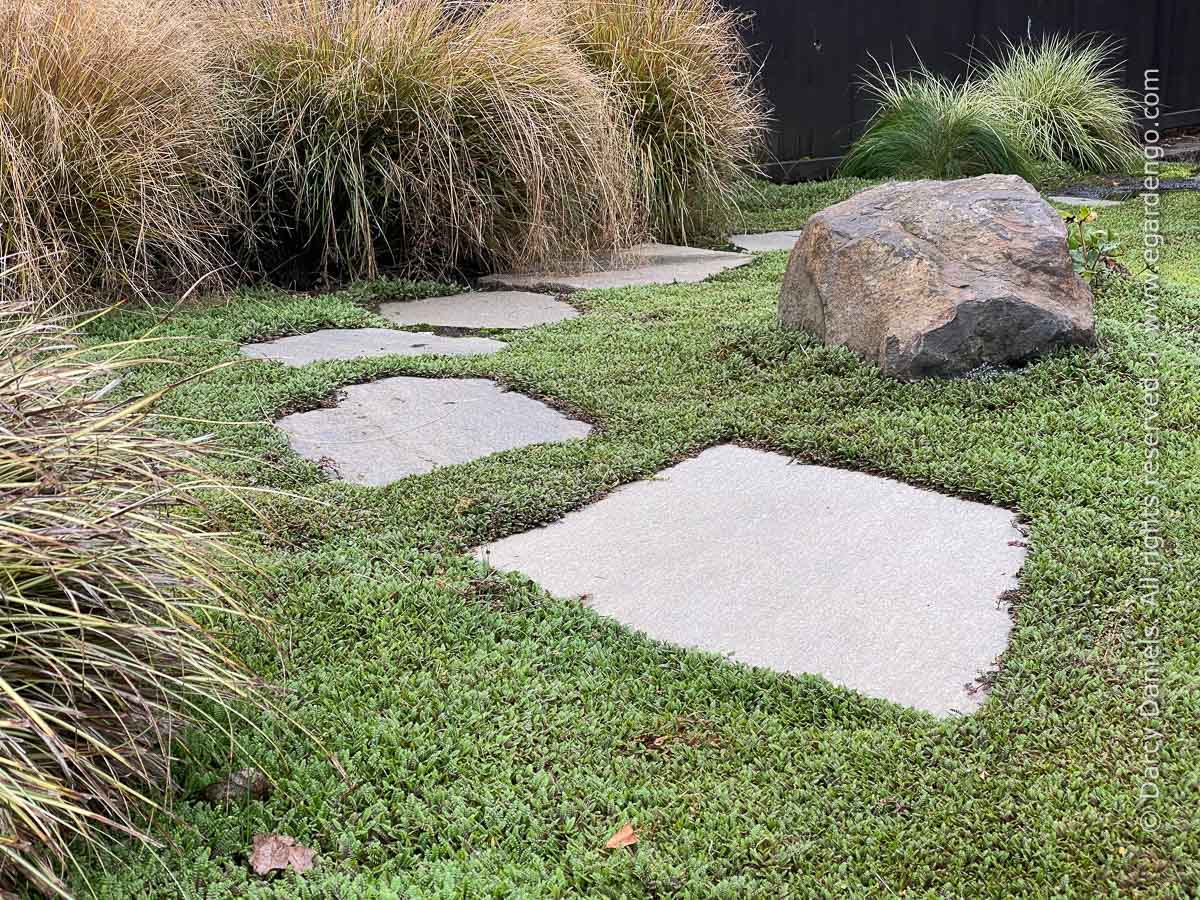
Flagstone and boulders surrounded by a carpet of Leptinella squalida 'Platt's Black'.
Flagstone and boulders surrounded by a carpet of Leptinella squalida 'Platt's Black'.
-
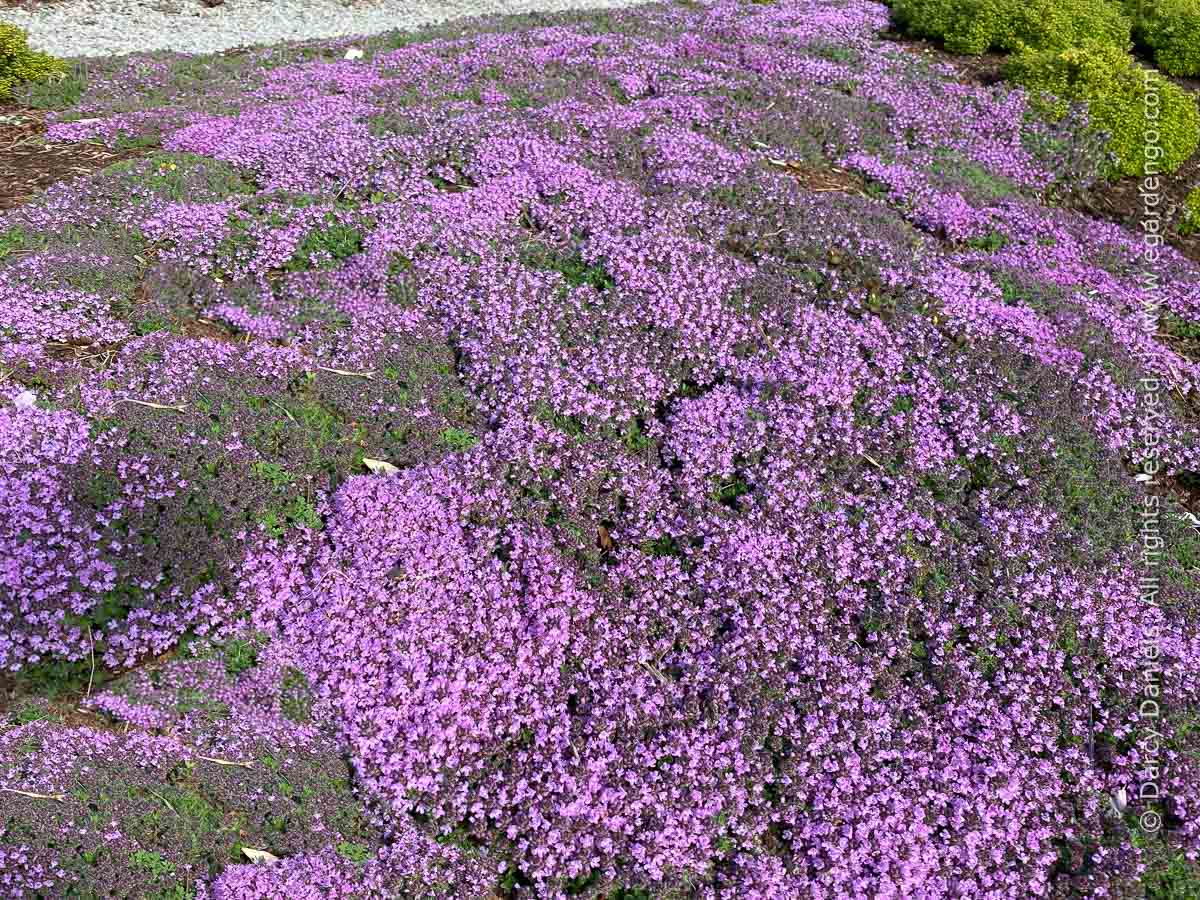
-
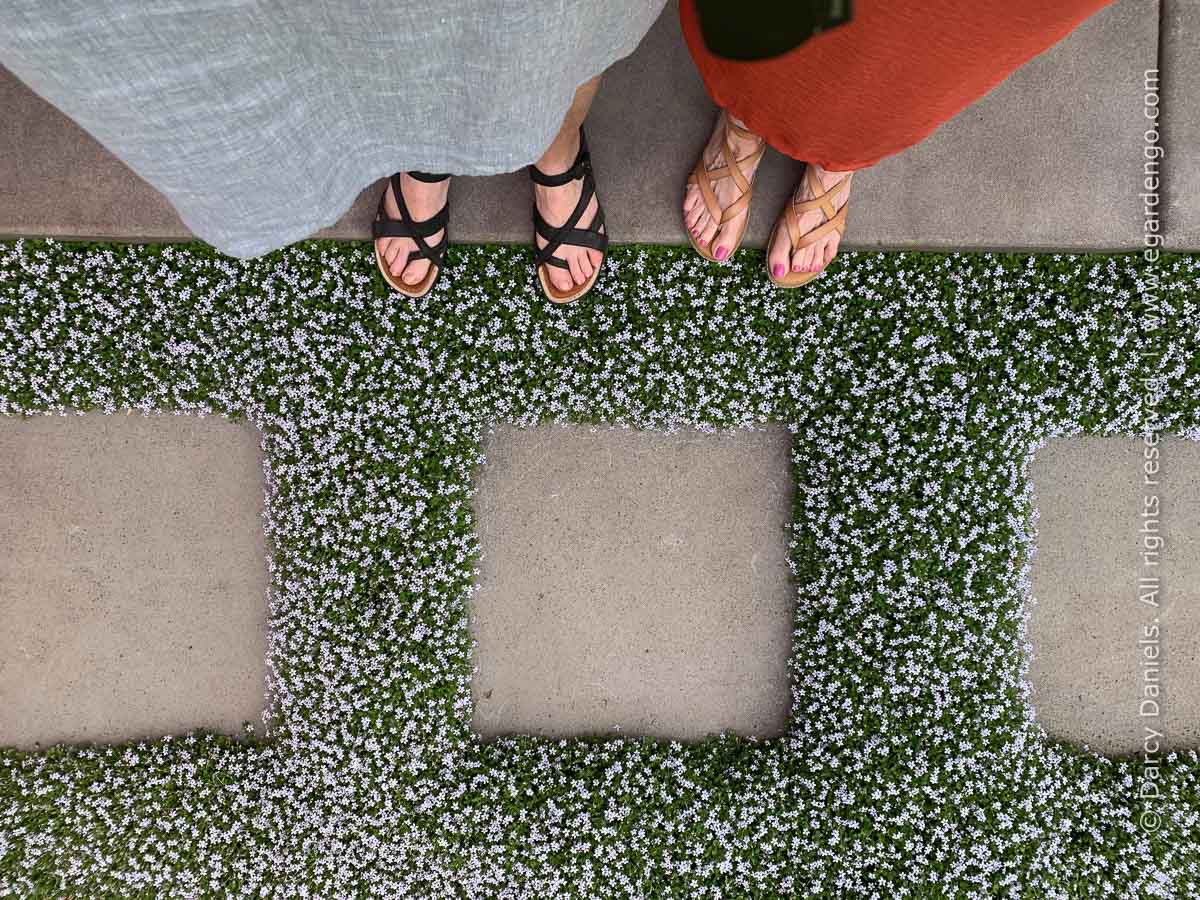
Step pads in a carpet of bluestar creeper.
Step pads in a carpet of bluestar creeper.
-
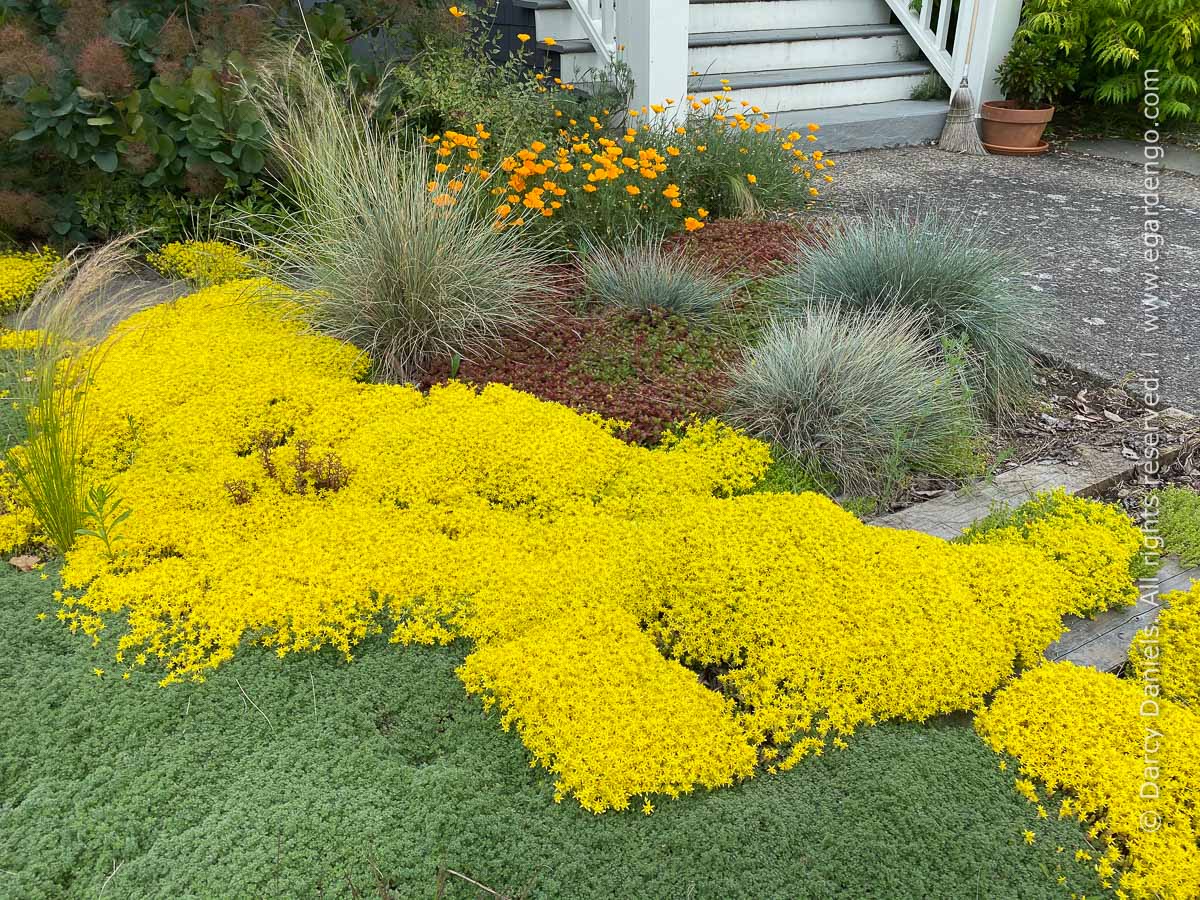
Several ground-hugging succulents mingle together to create a carpet of colorful, drought-tolerant plants.
Several ground-hugging succulents mingle together to create a carpet of colorful, drought-tolerant plants.
-
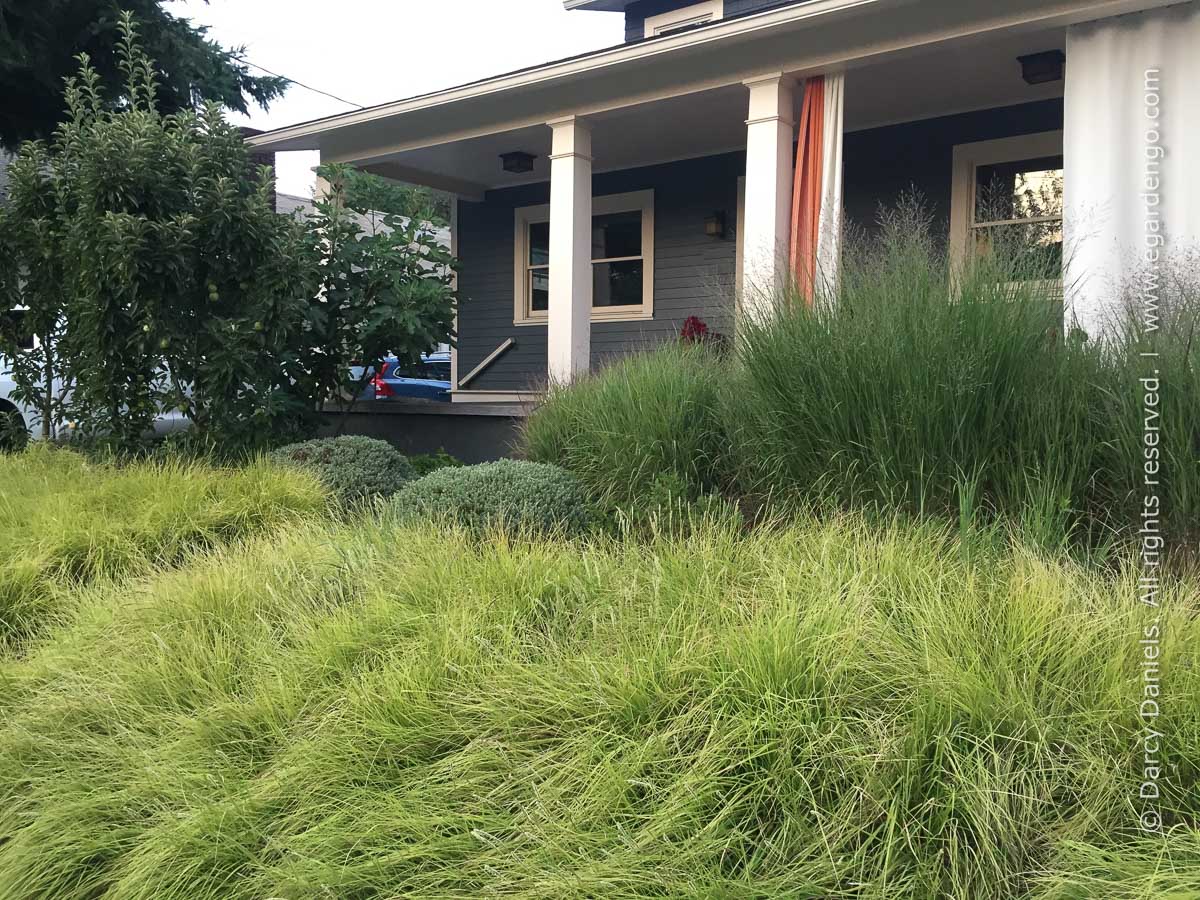
-
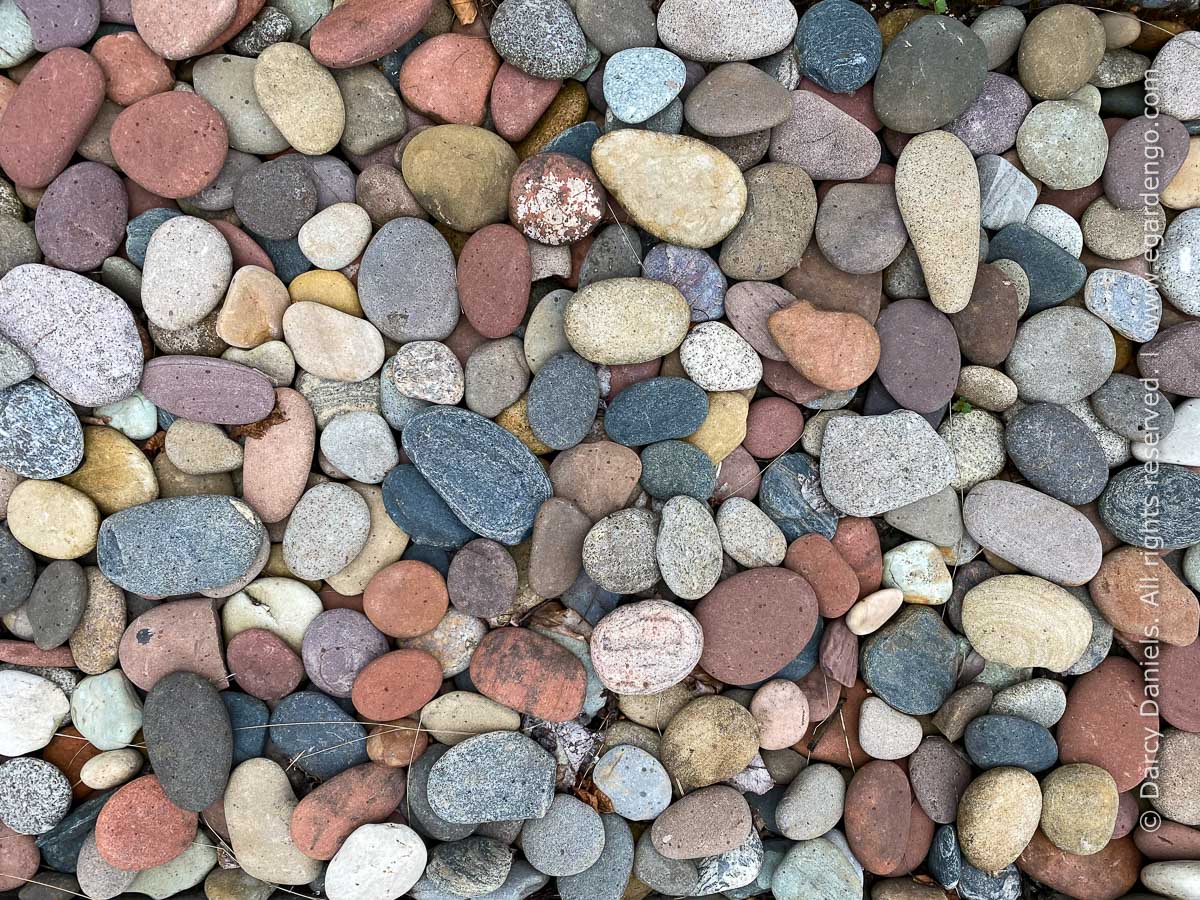
Sometimes a non-organic mulch is the right solution for covering the ground. Particularly when the growing conditions are especially challenging. In moderation, gravel and river stones can be a wonderful foil for accent plants that have strong, dramatic forms. For example, it would be an attractive ground cover to set off the strong forms Agave, Yucca, or Cordyline.
Sometimes a non-organic mulch is the right solution for covering the ground. Particularly when the growing conditions are especially challenging. In moderation, gravel and river stones can be a wonderful foil for accent plants that have strong, dramatic forms. For example, it would be an attractive ground cover to set off the strong forms Agave, Yucca, or Cordyline.
advertisement
Published February 05, 2022

